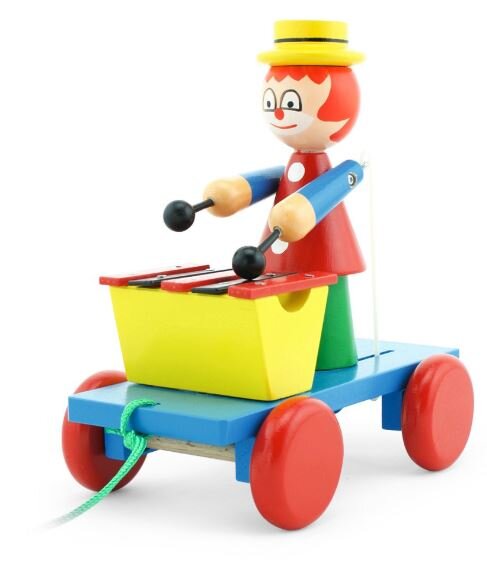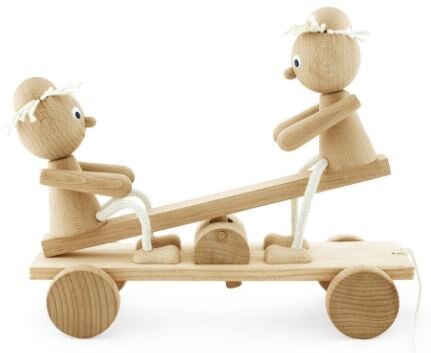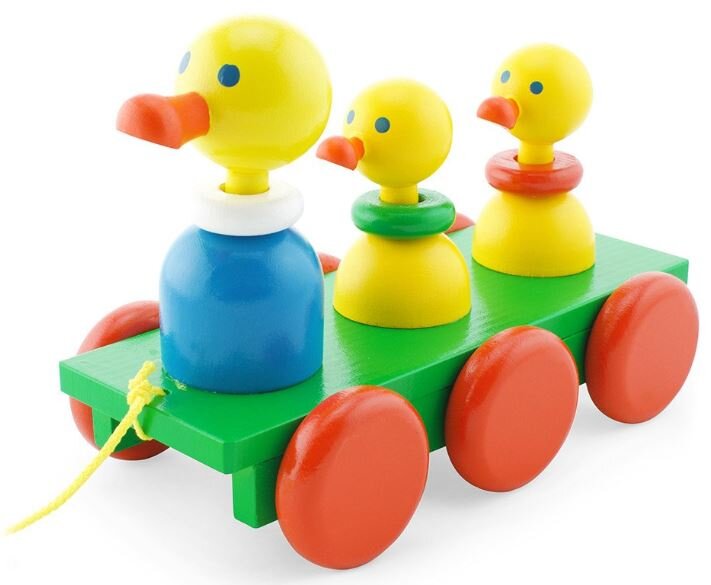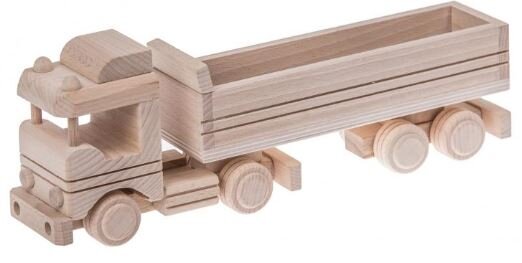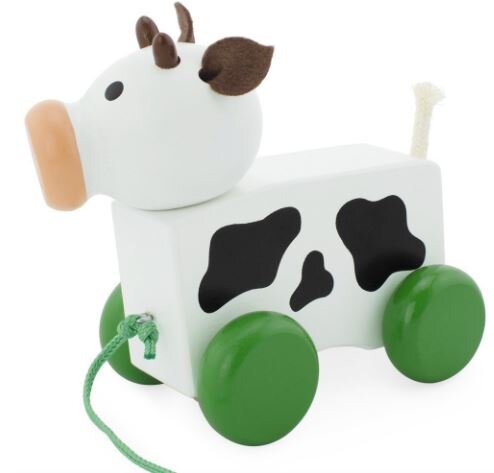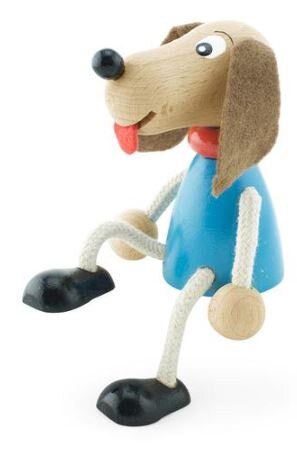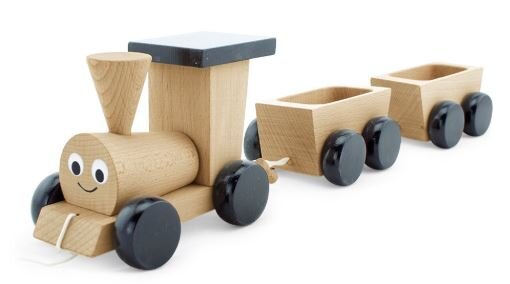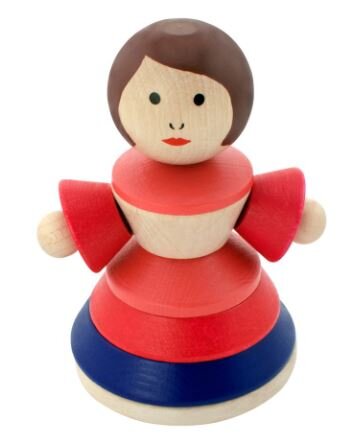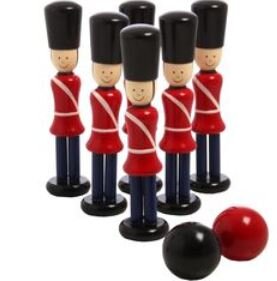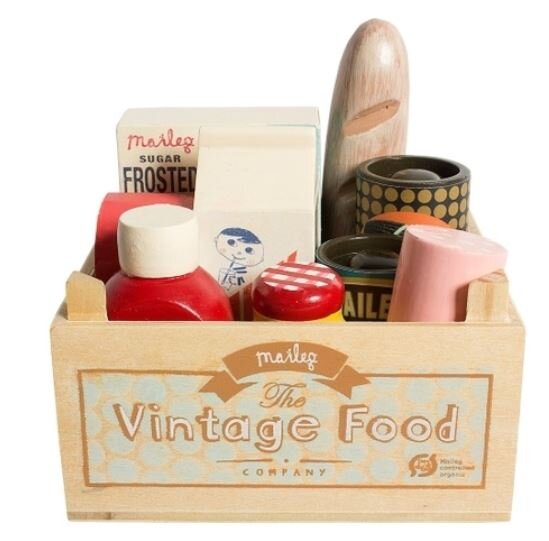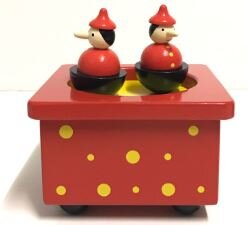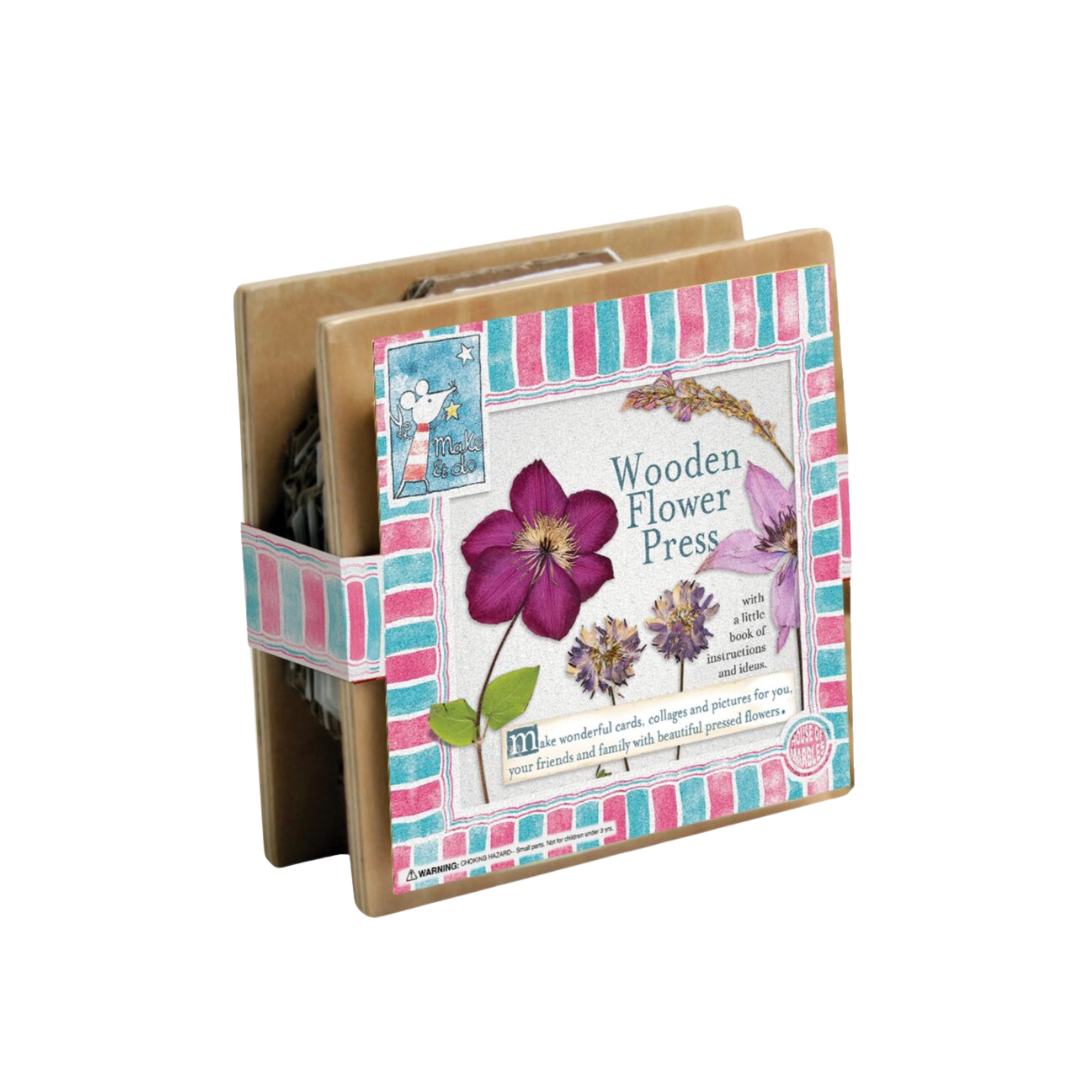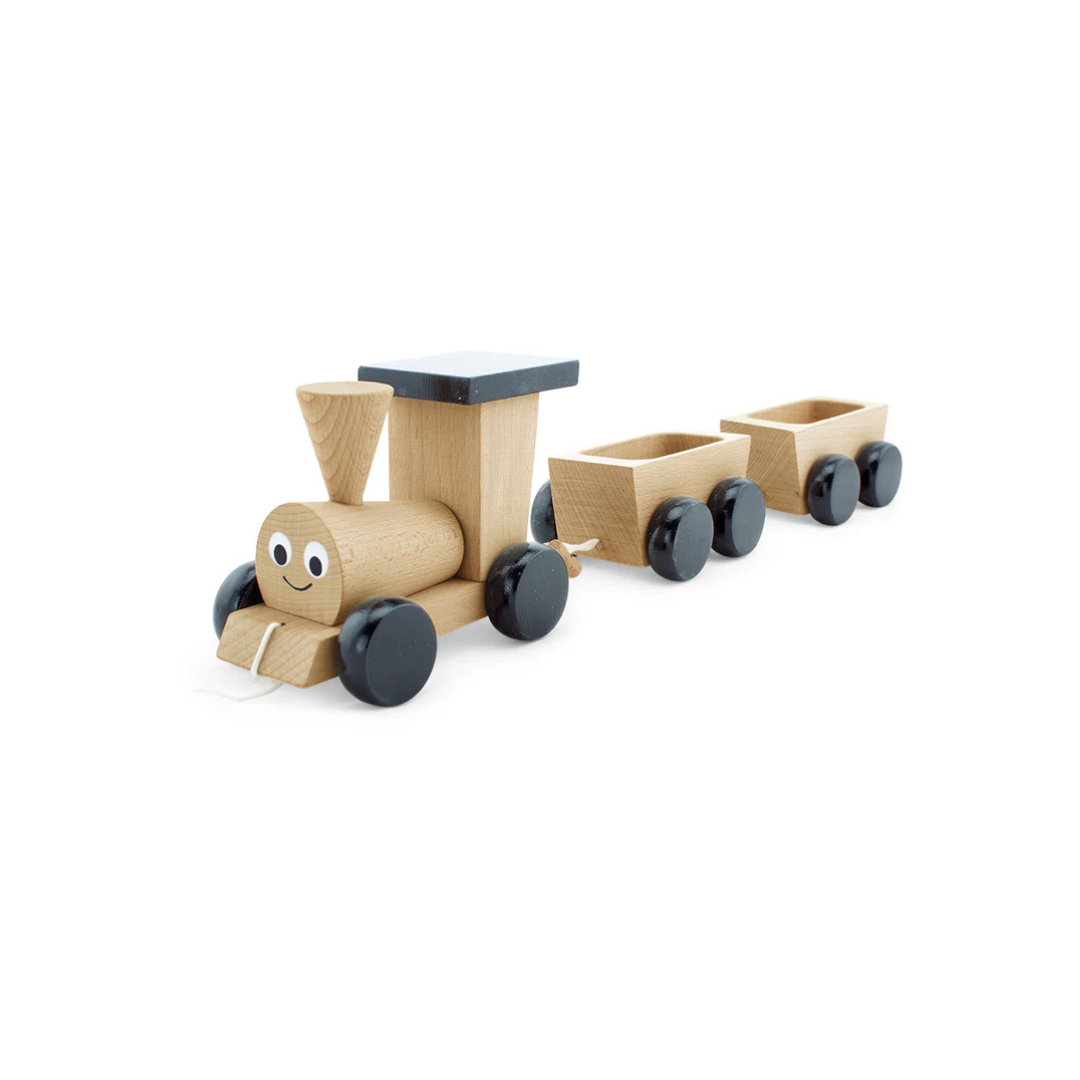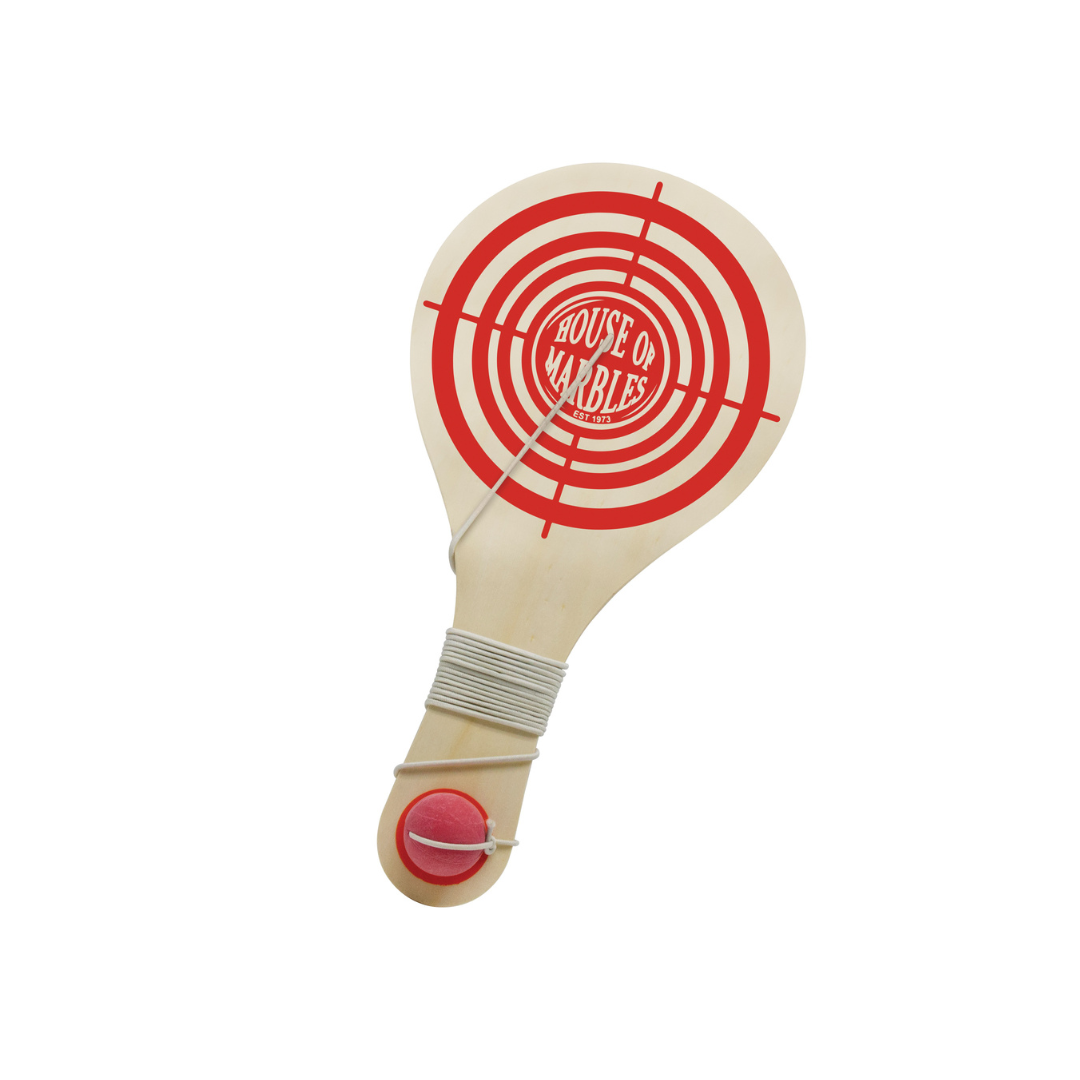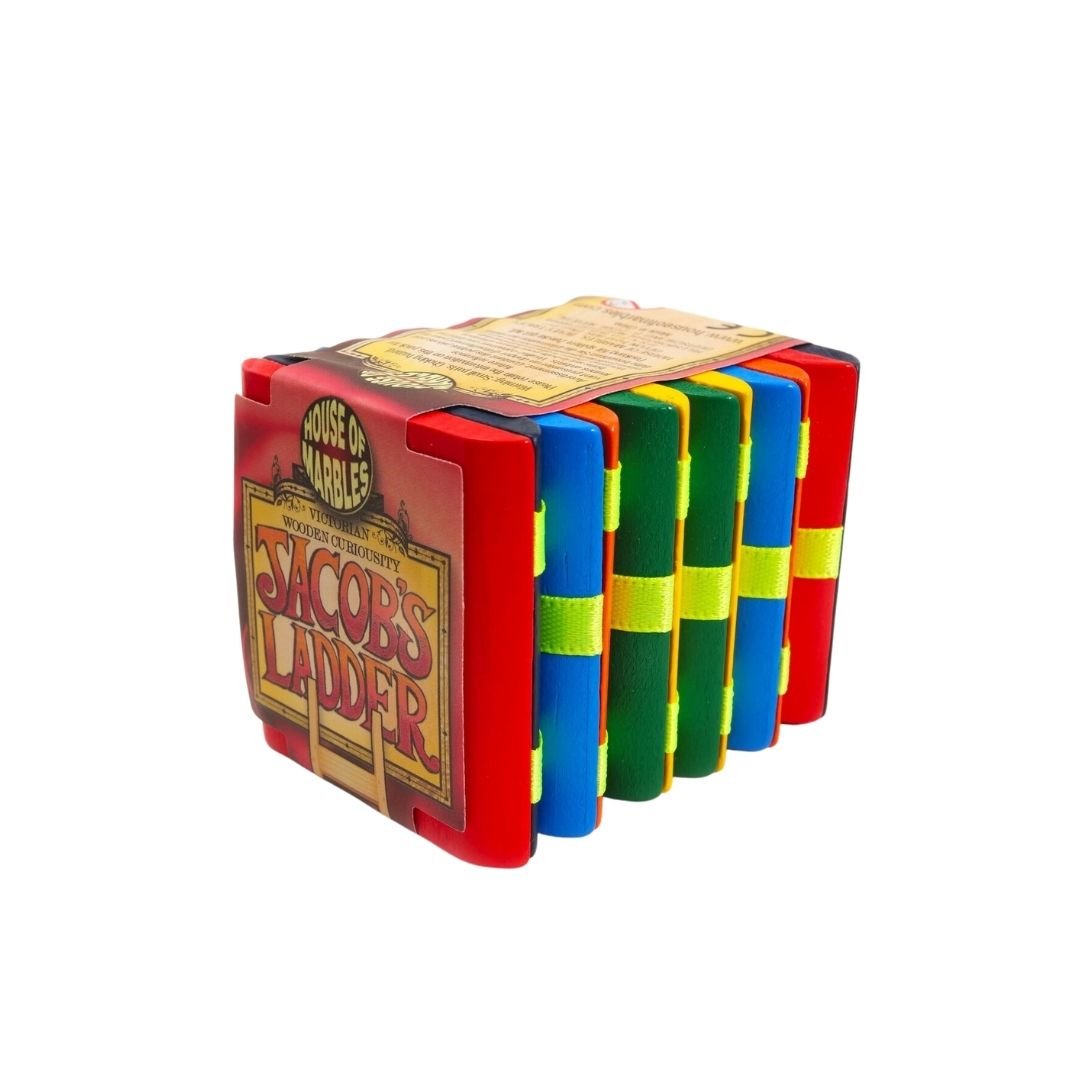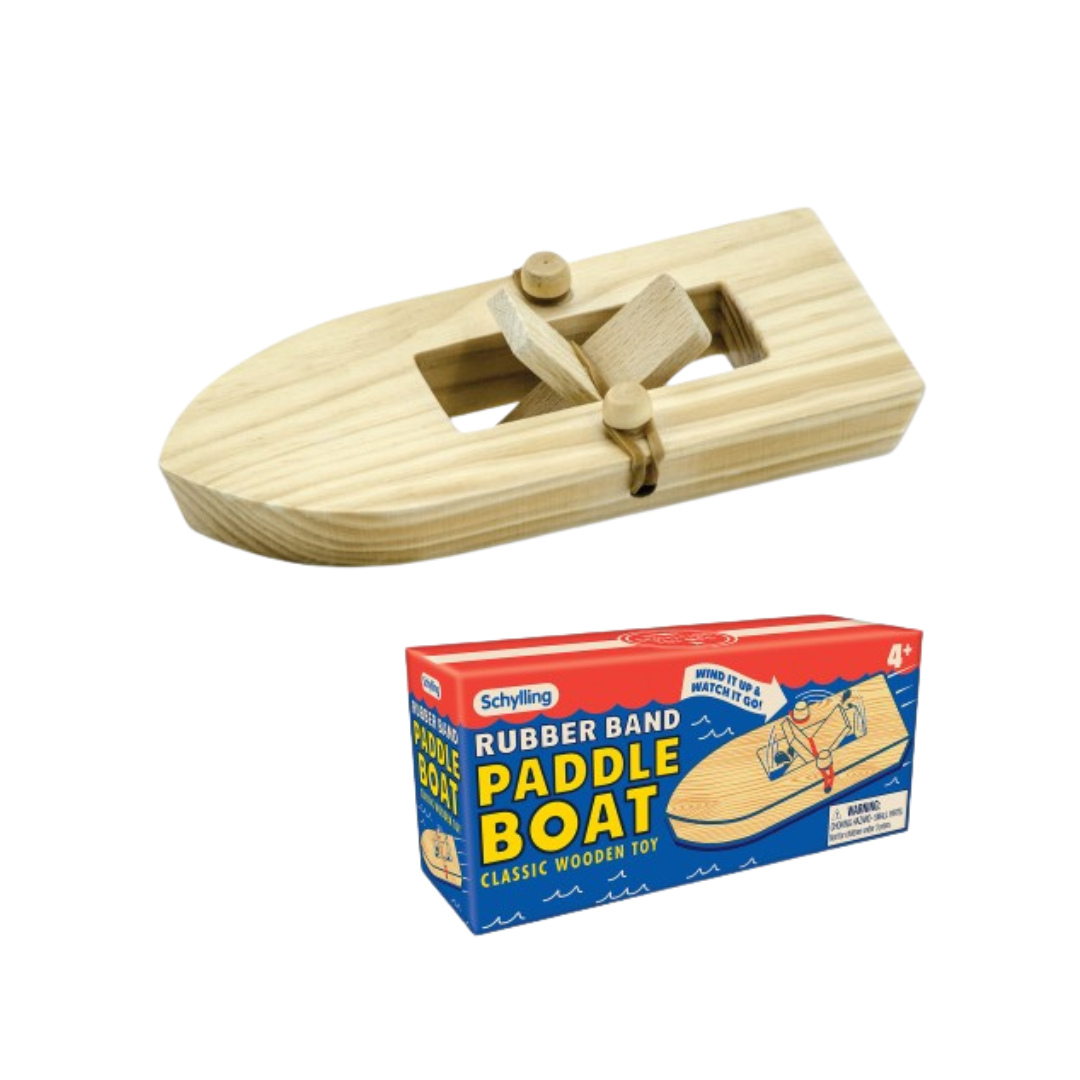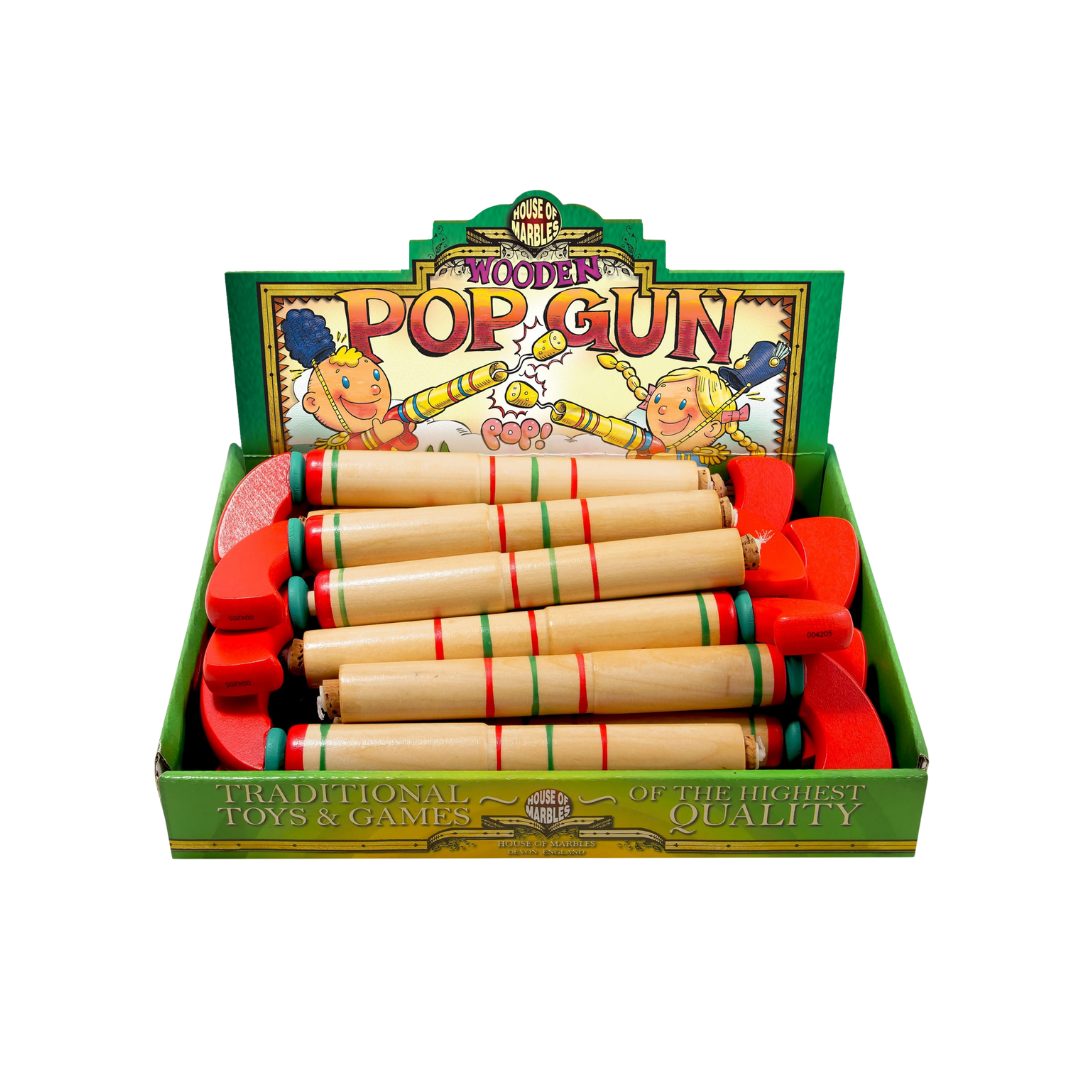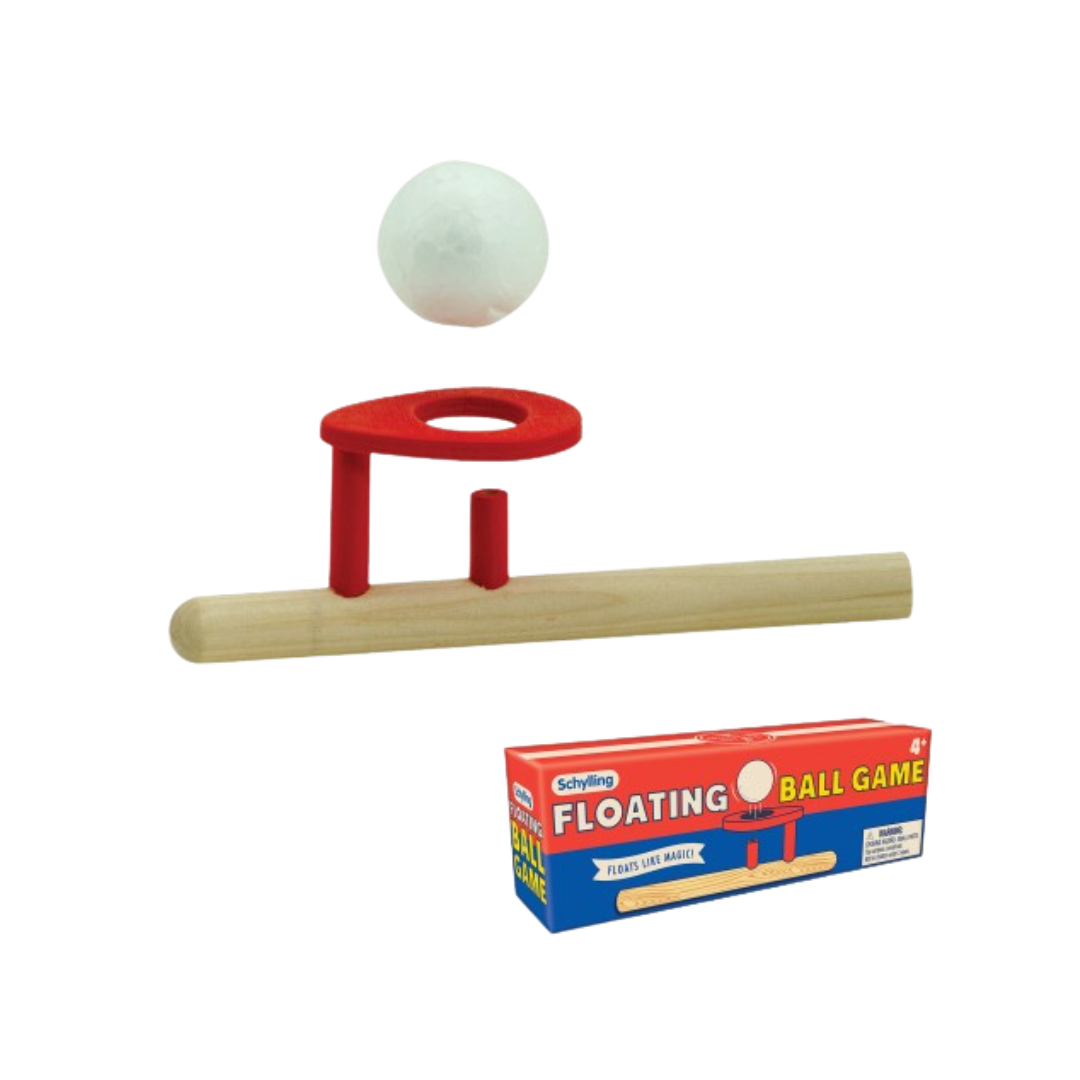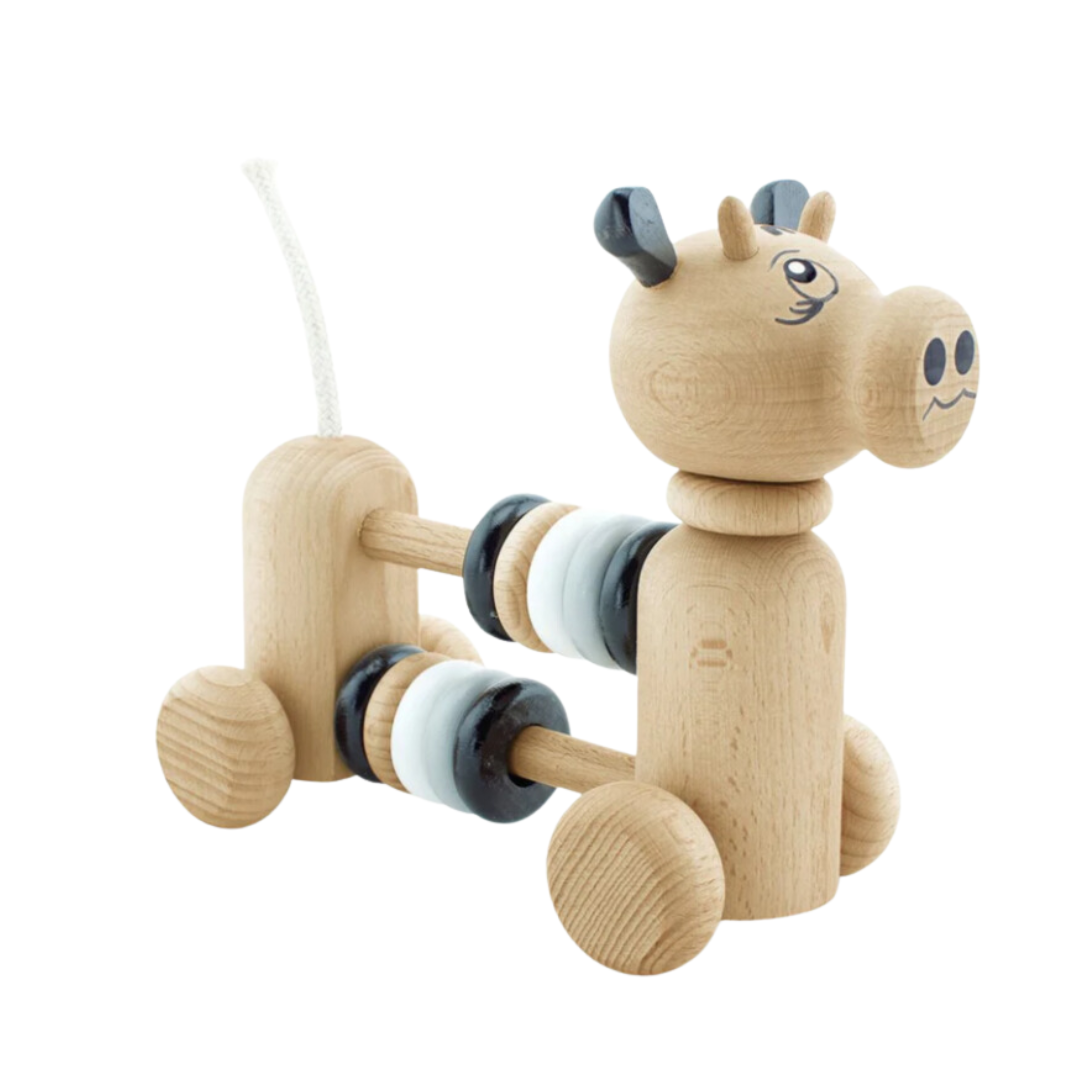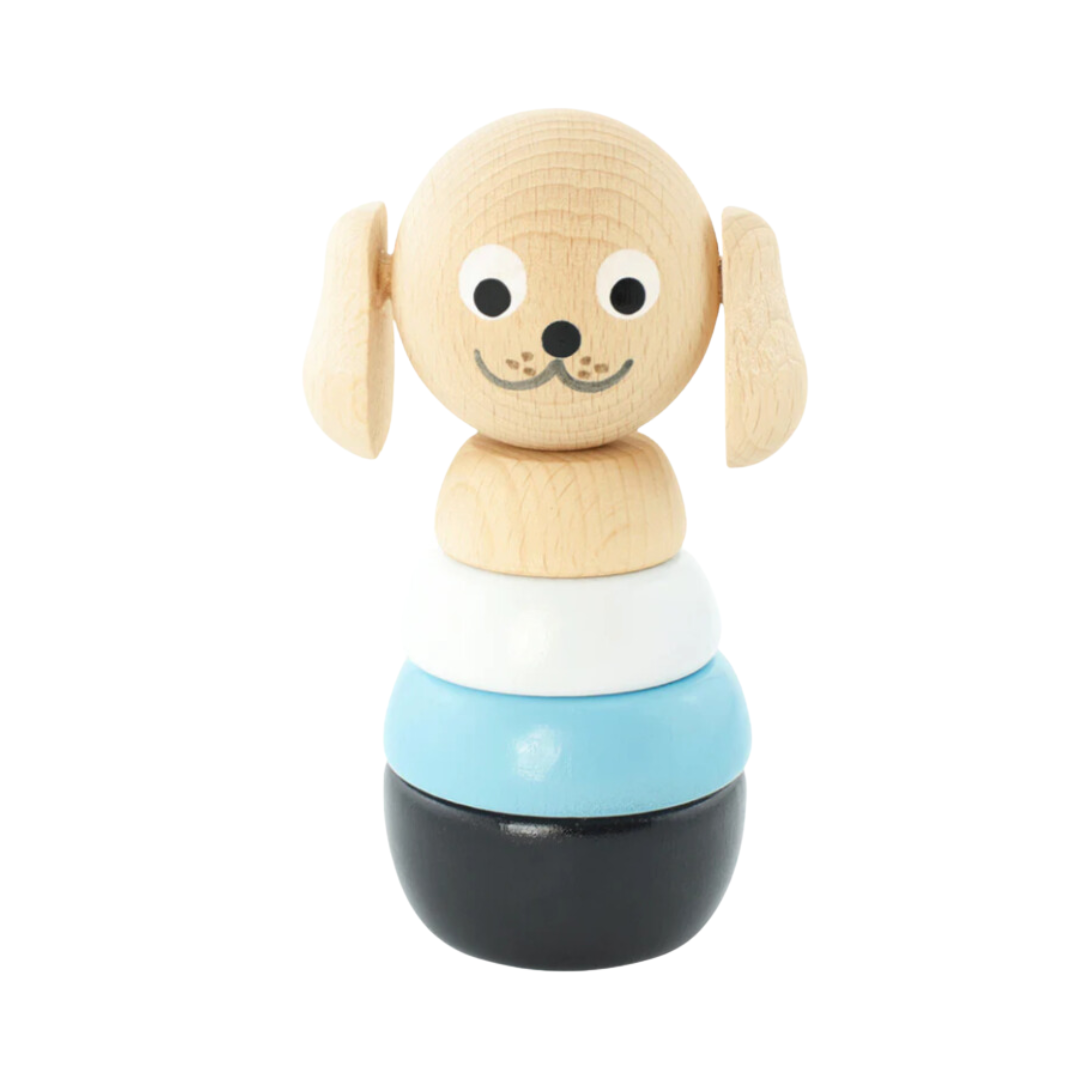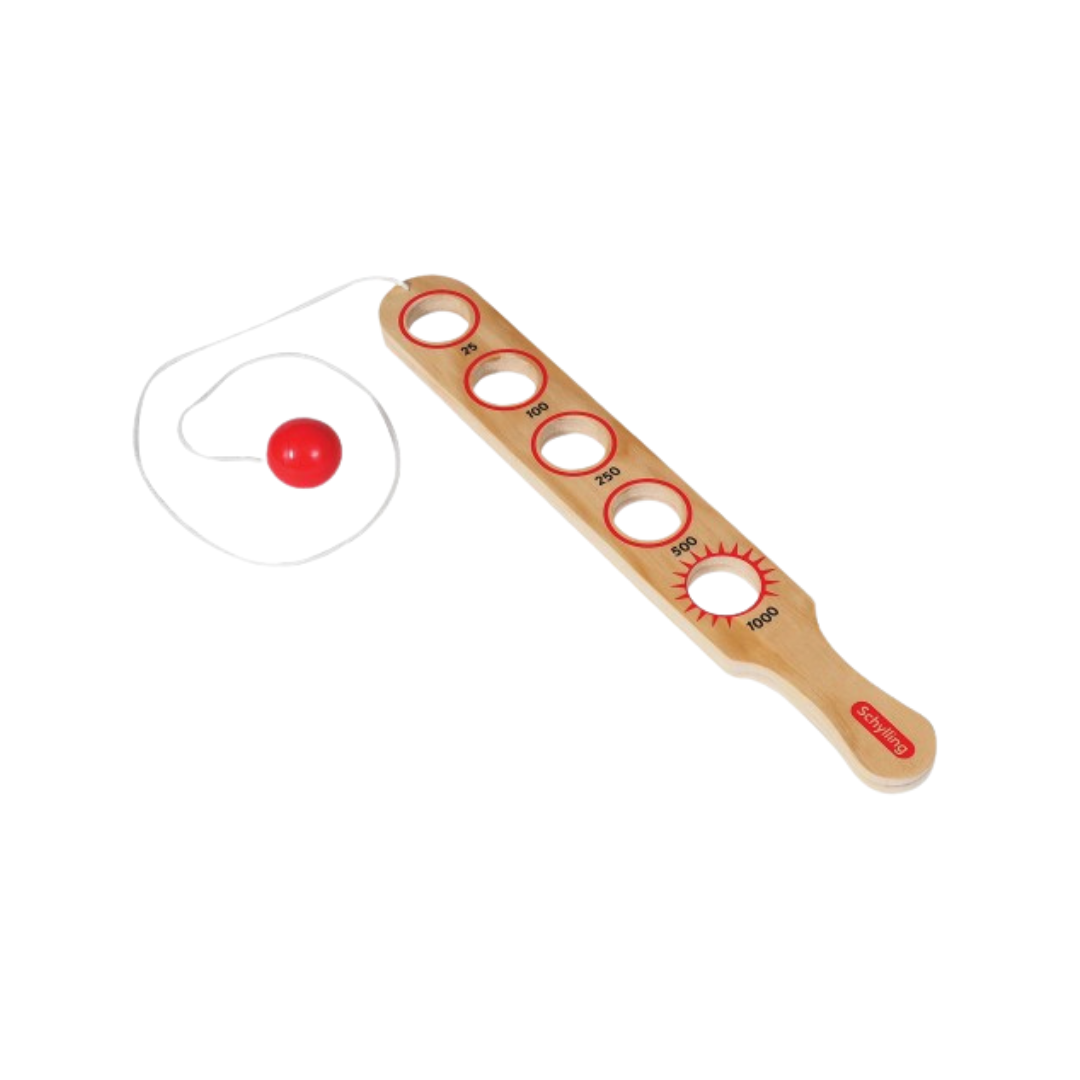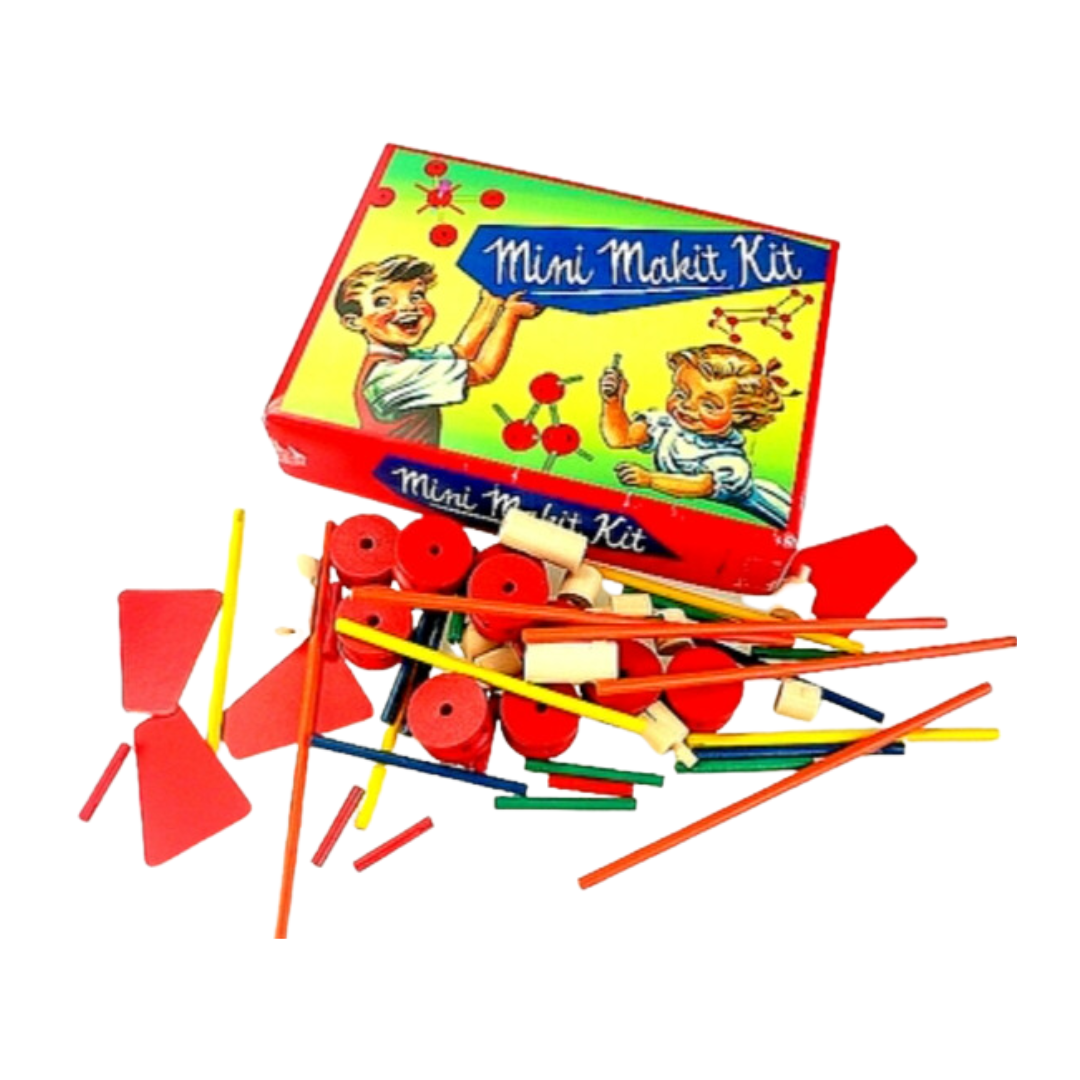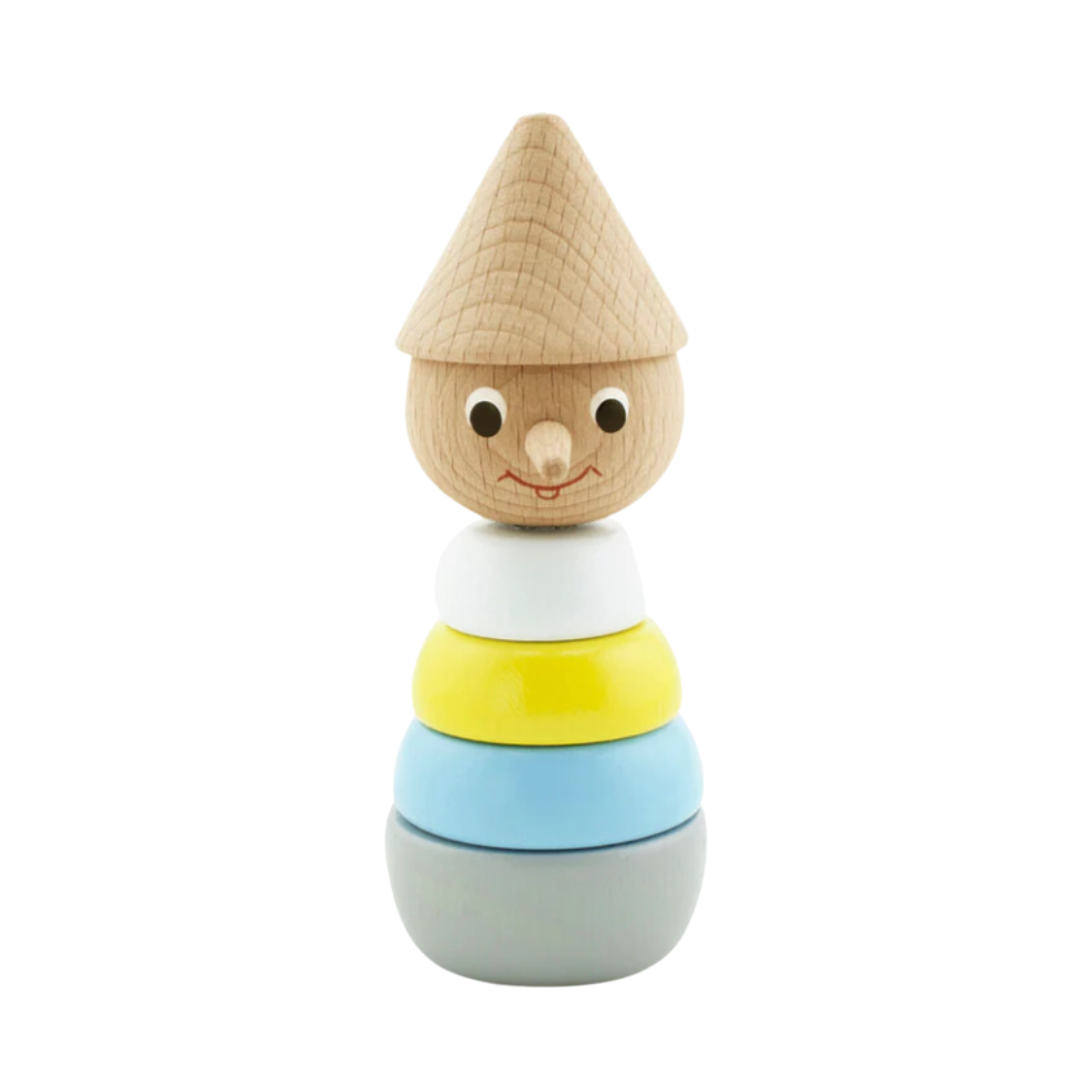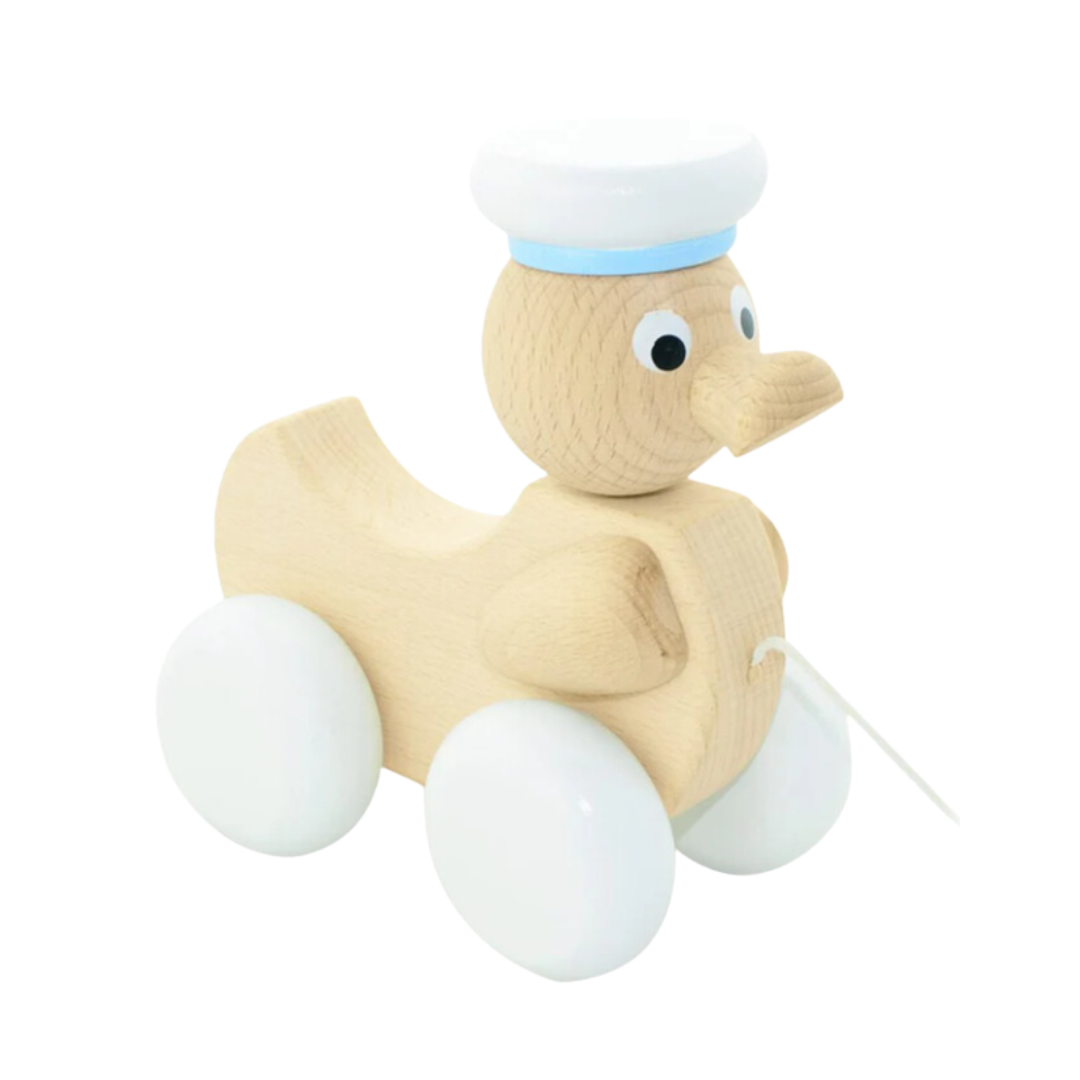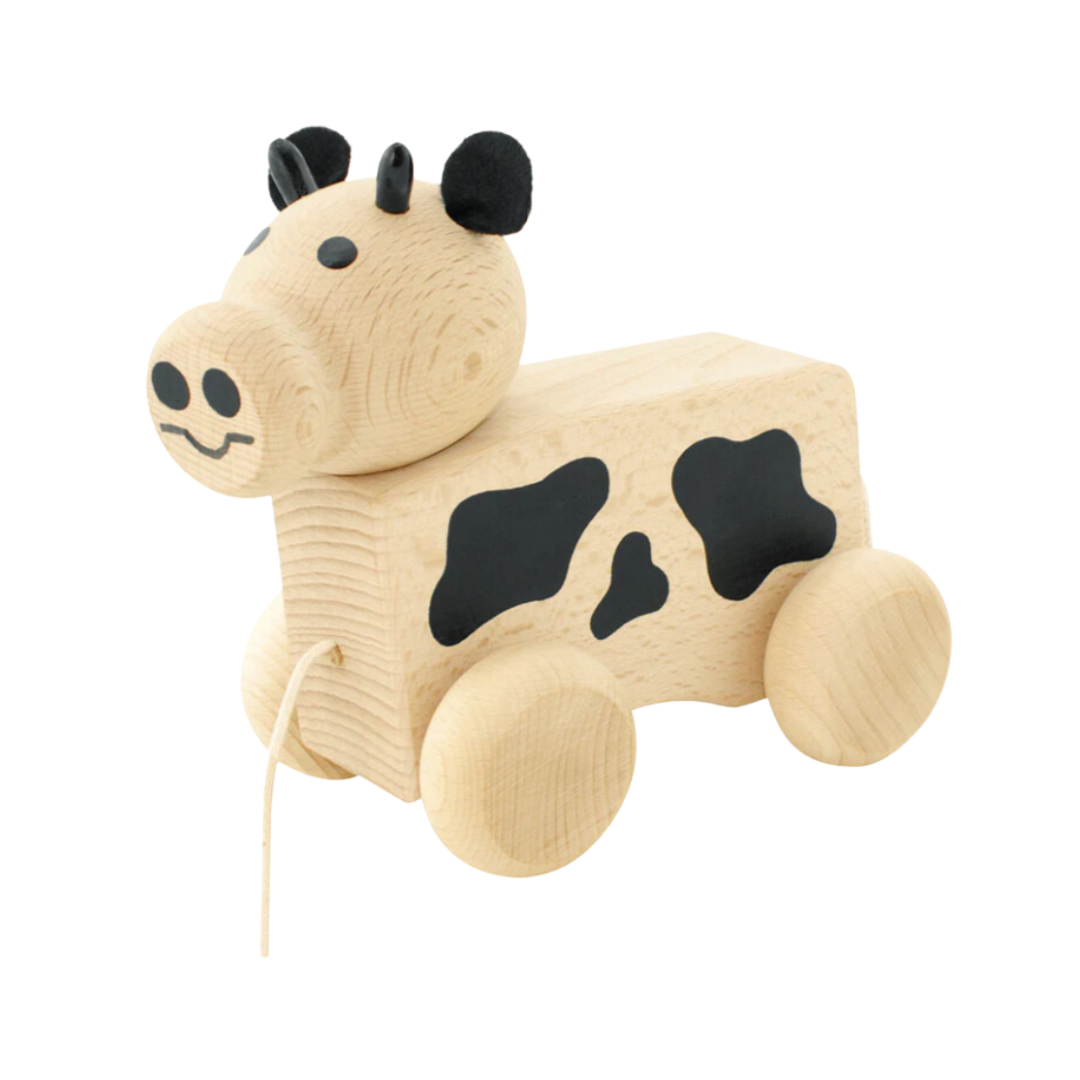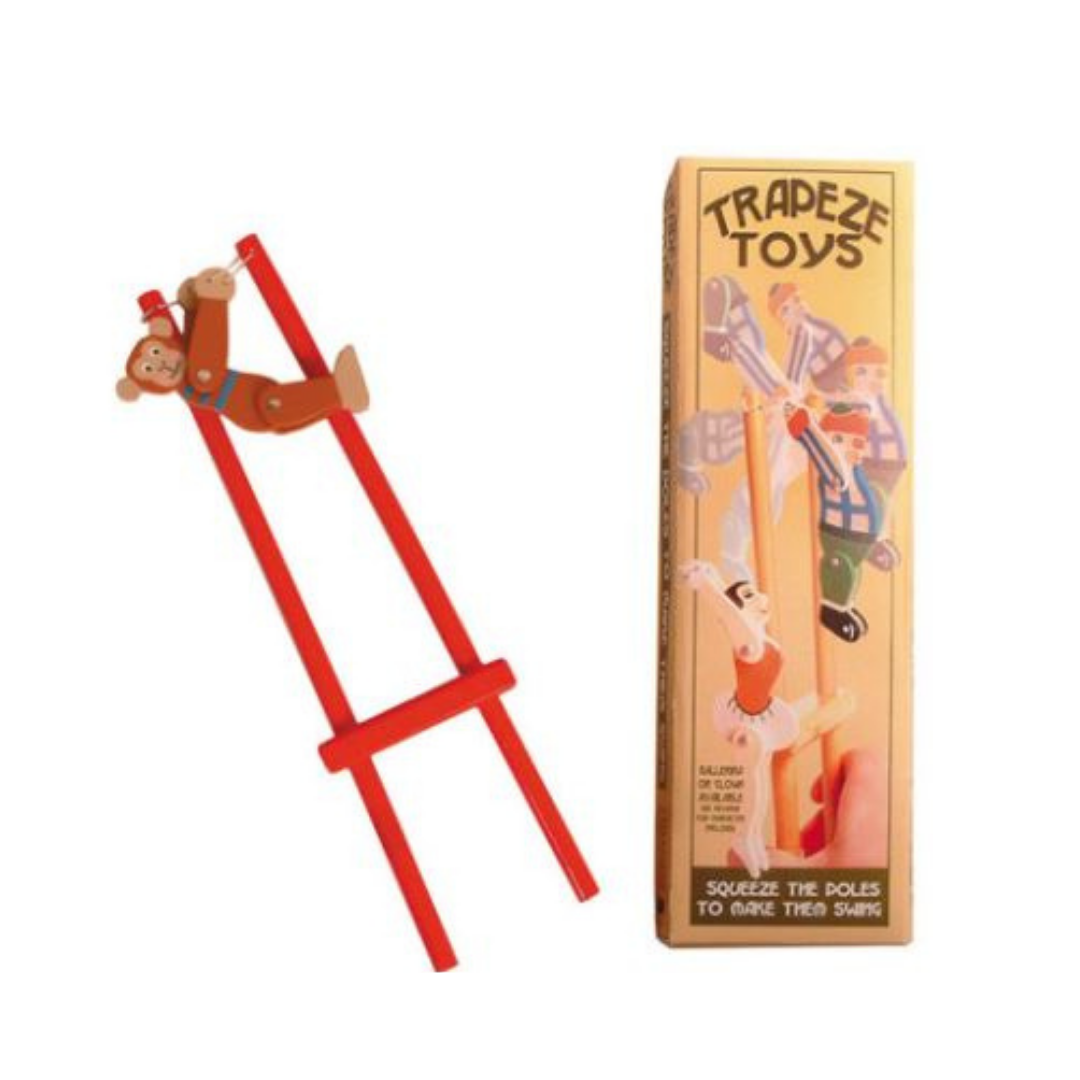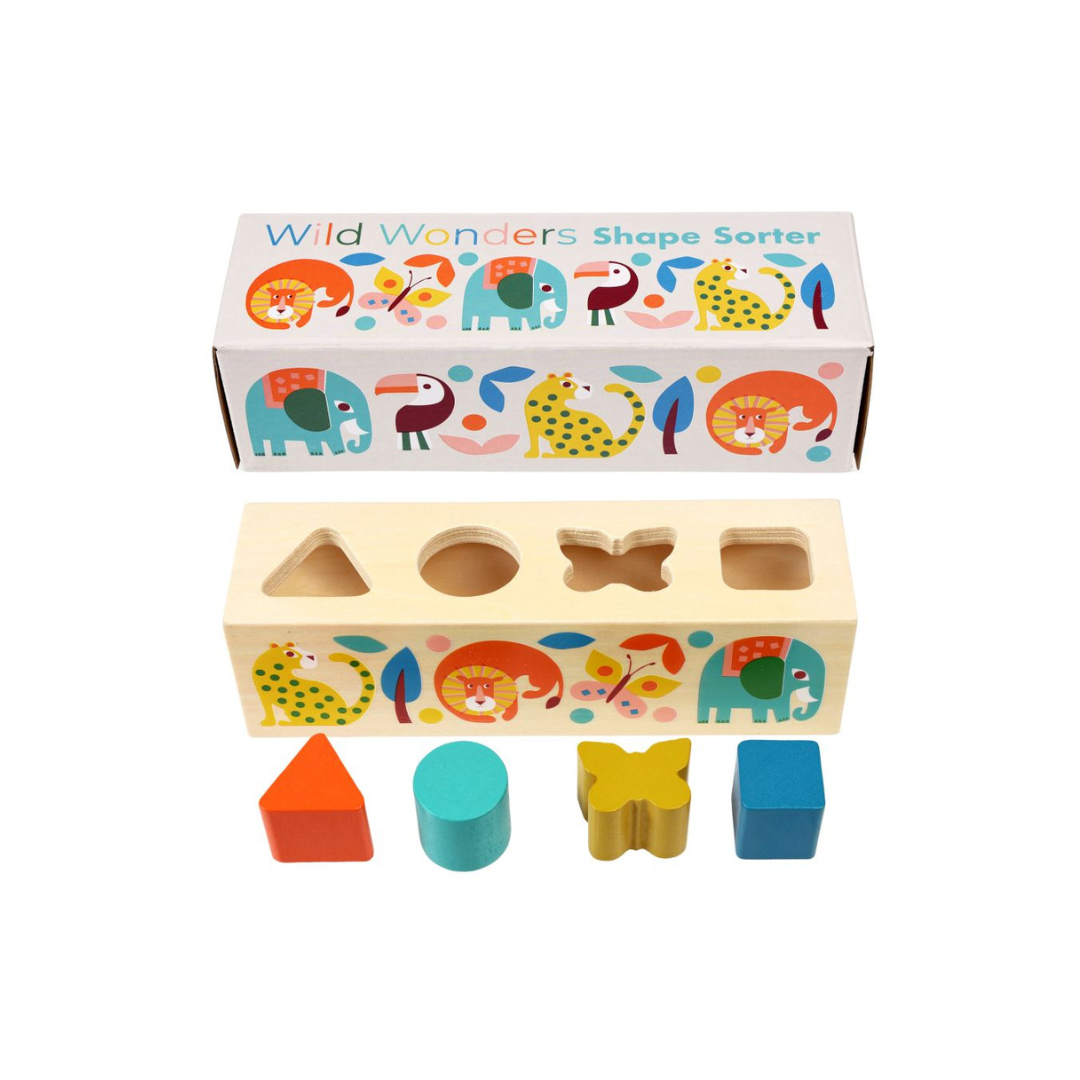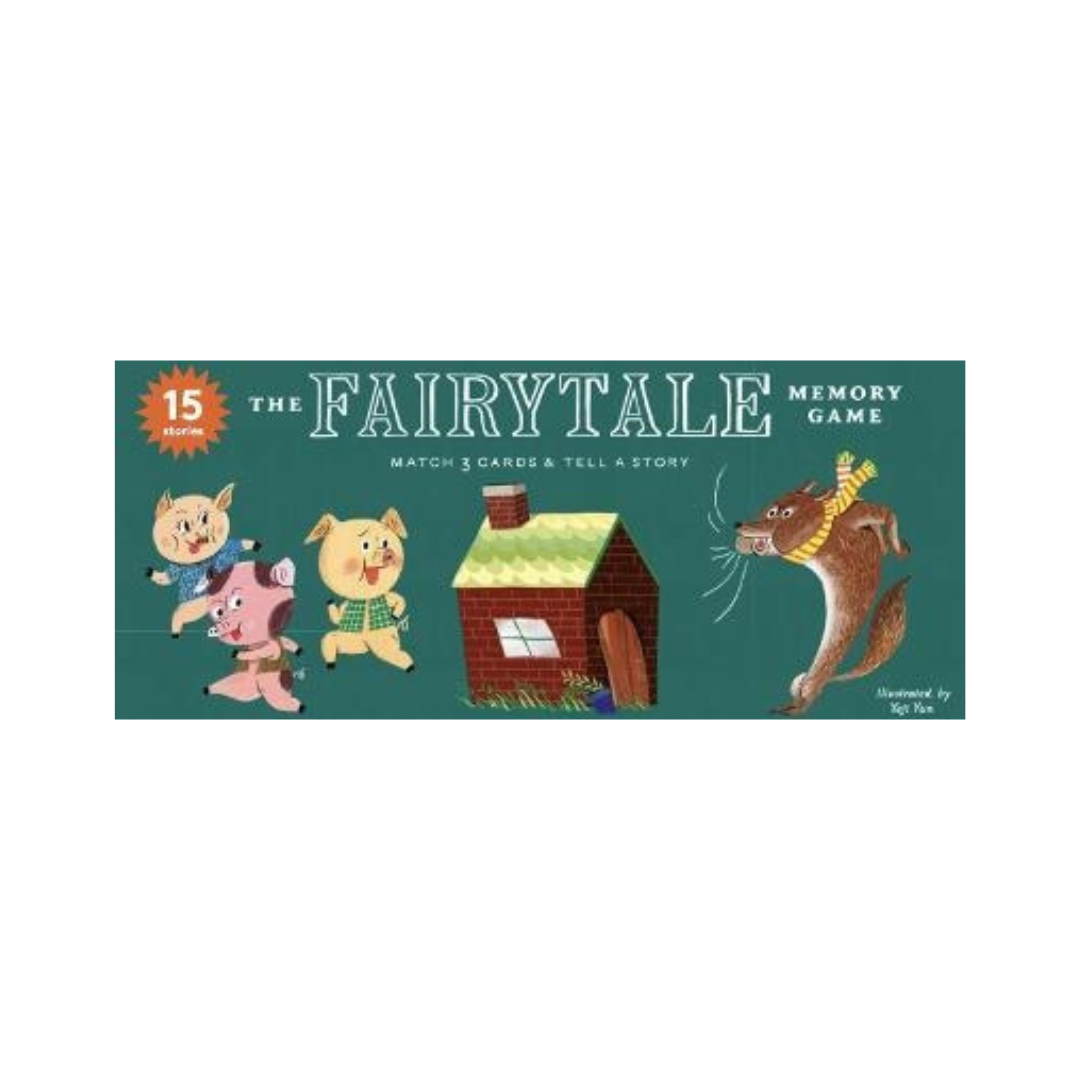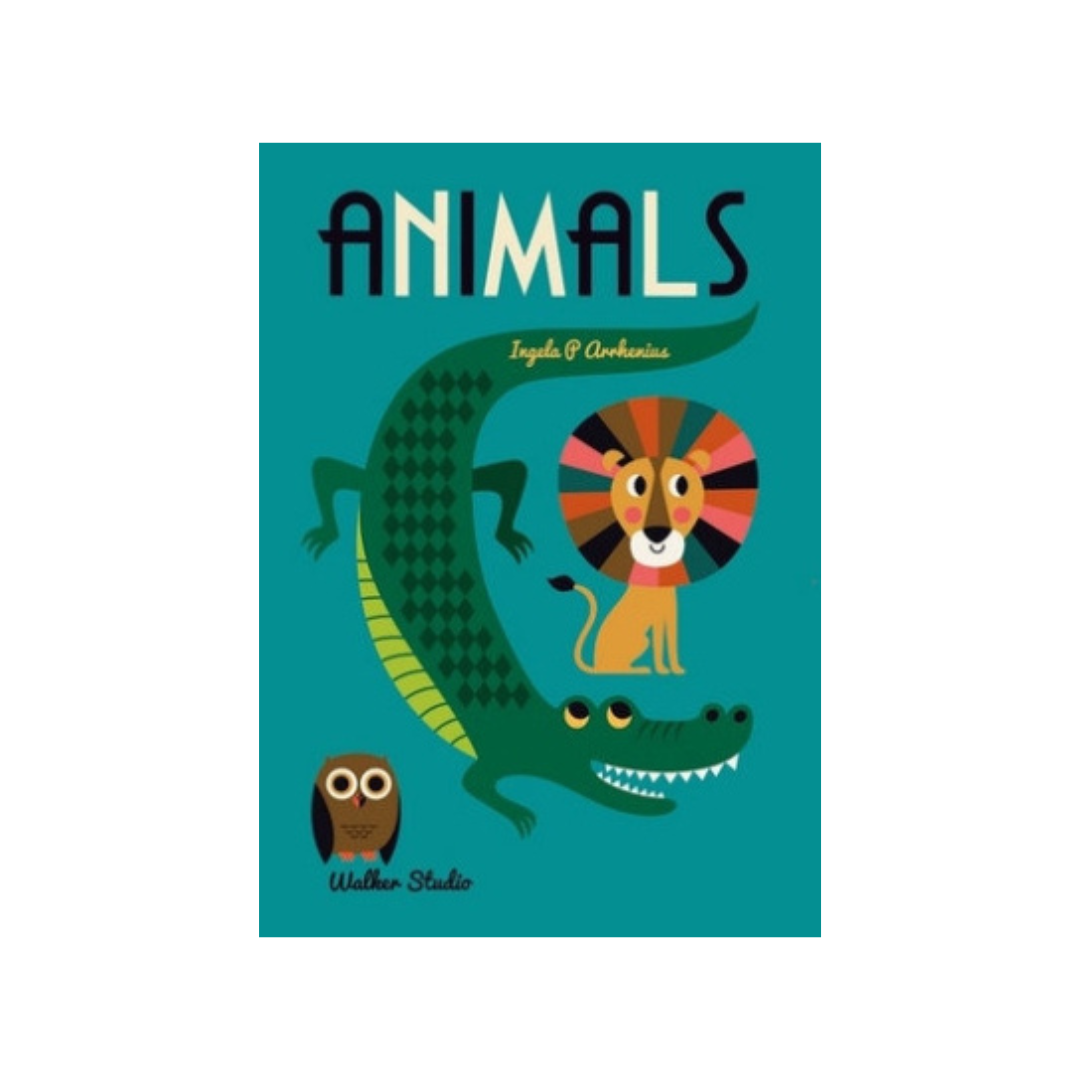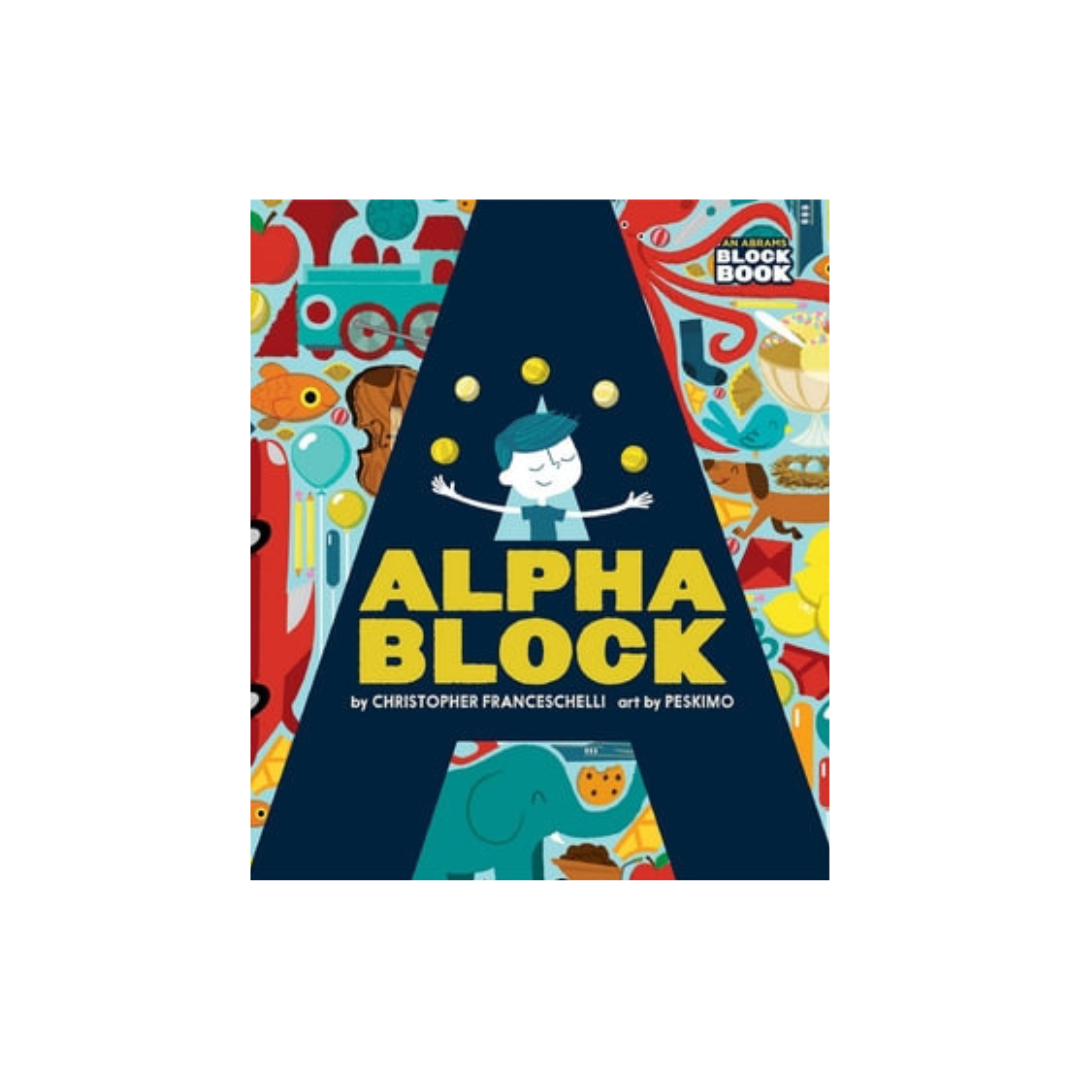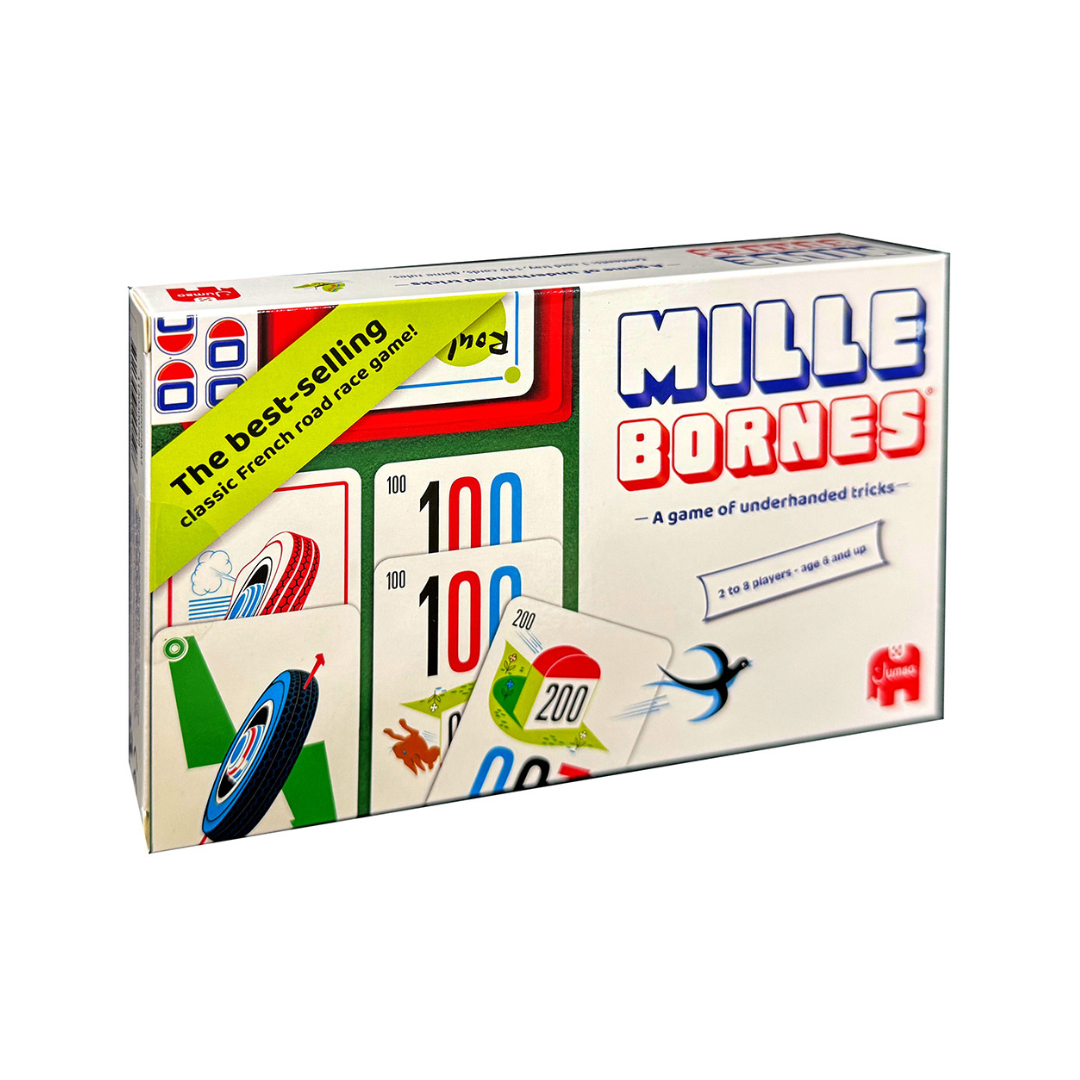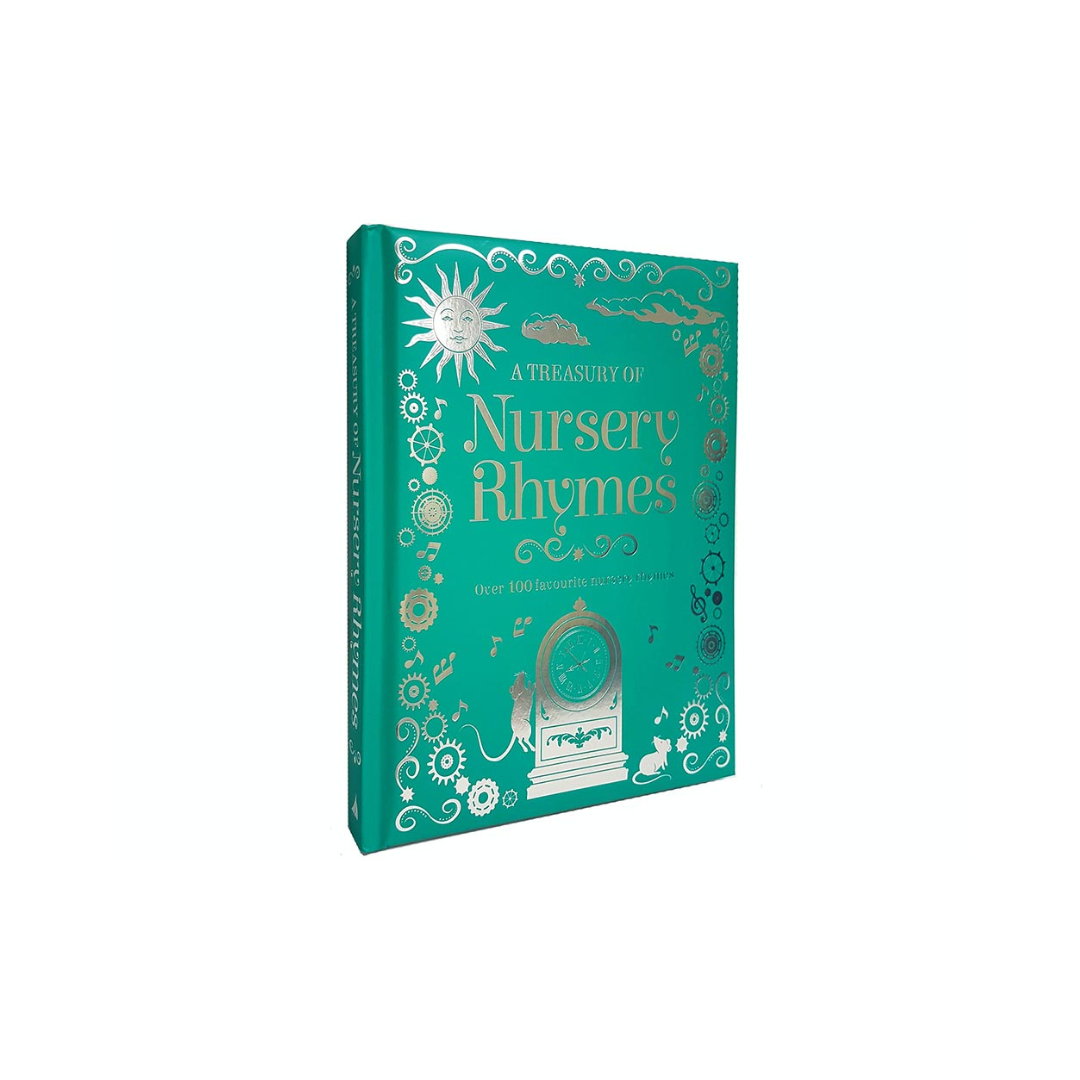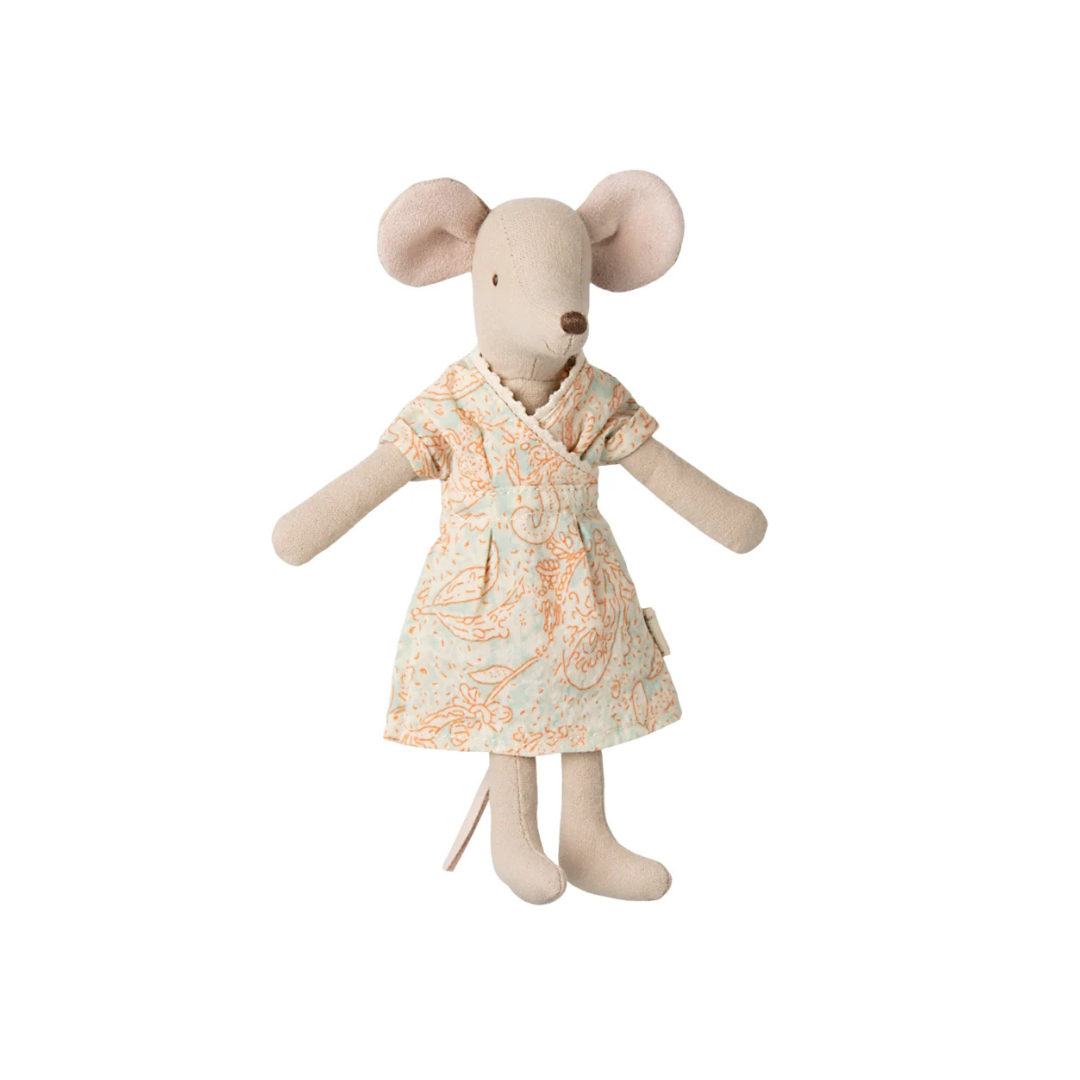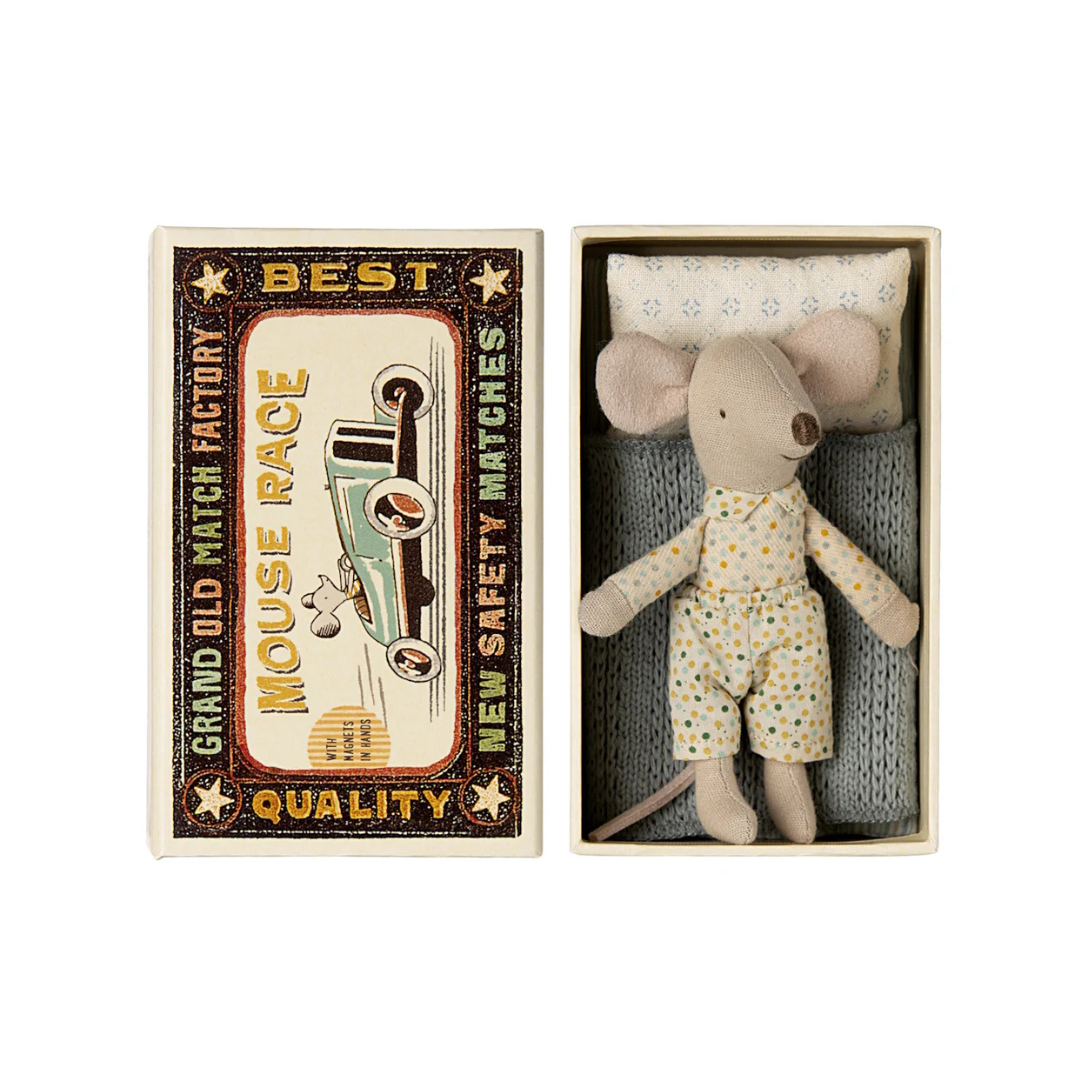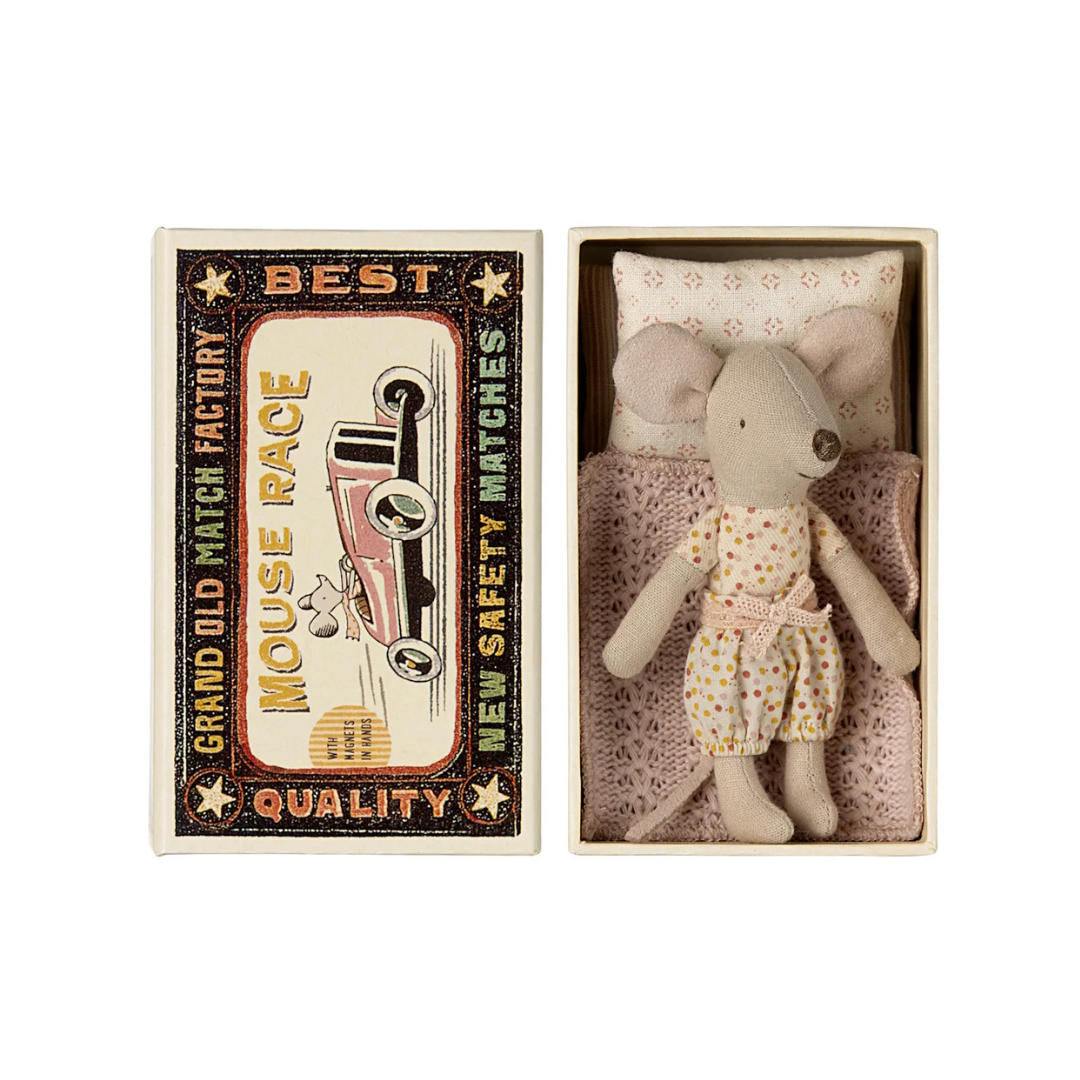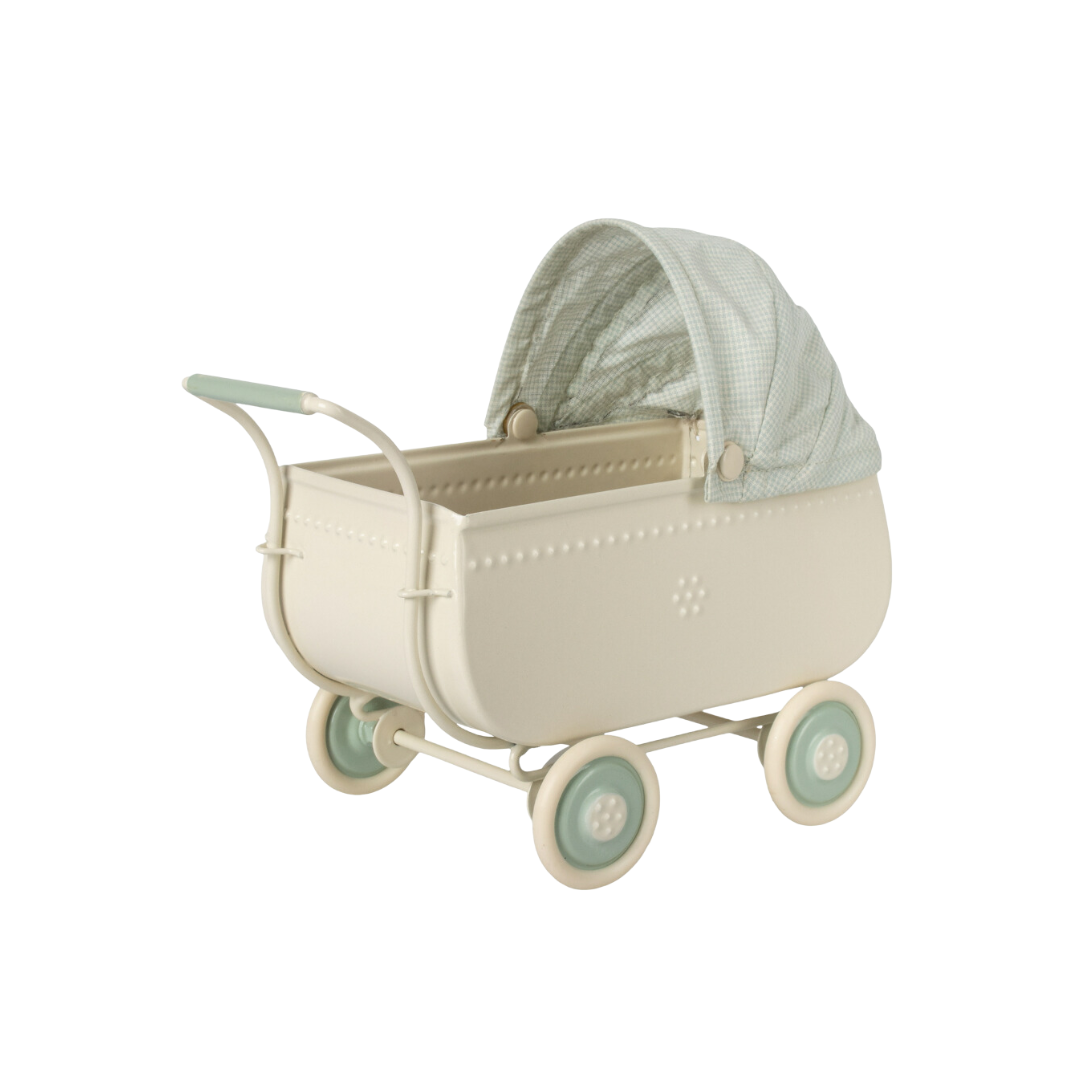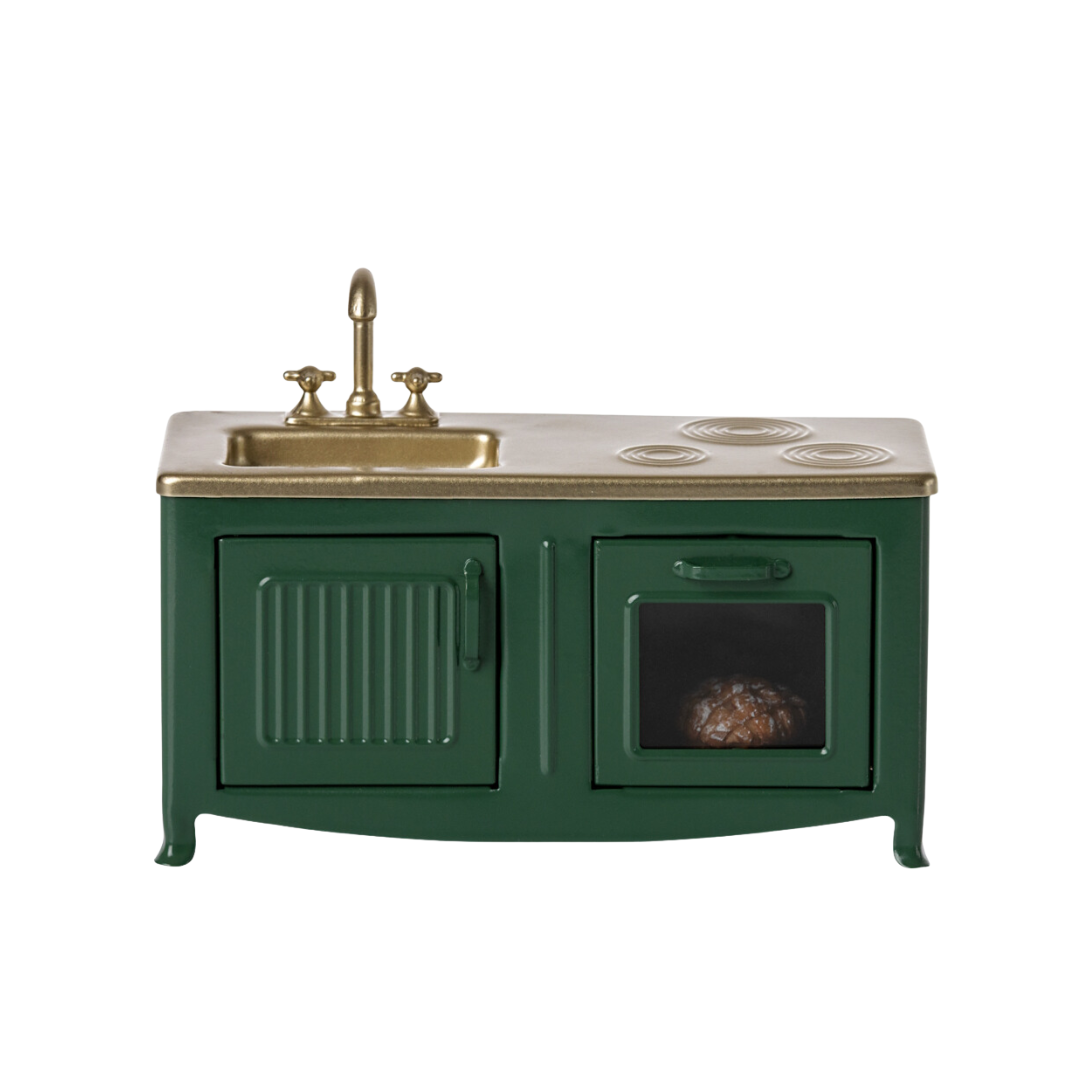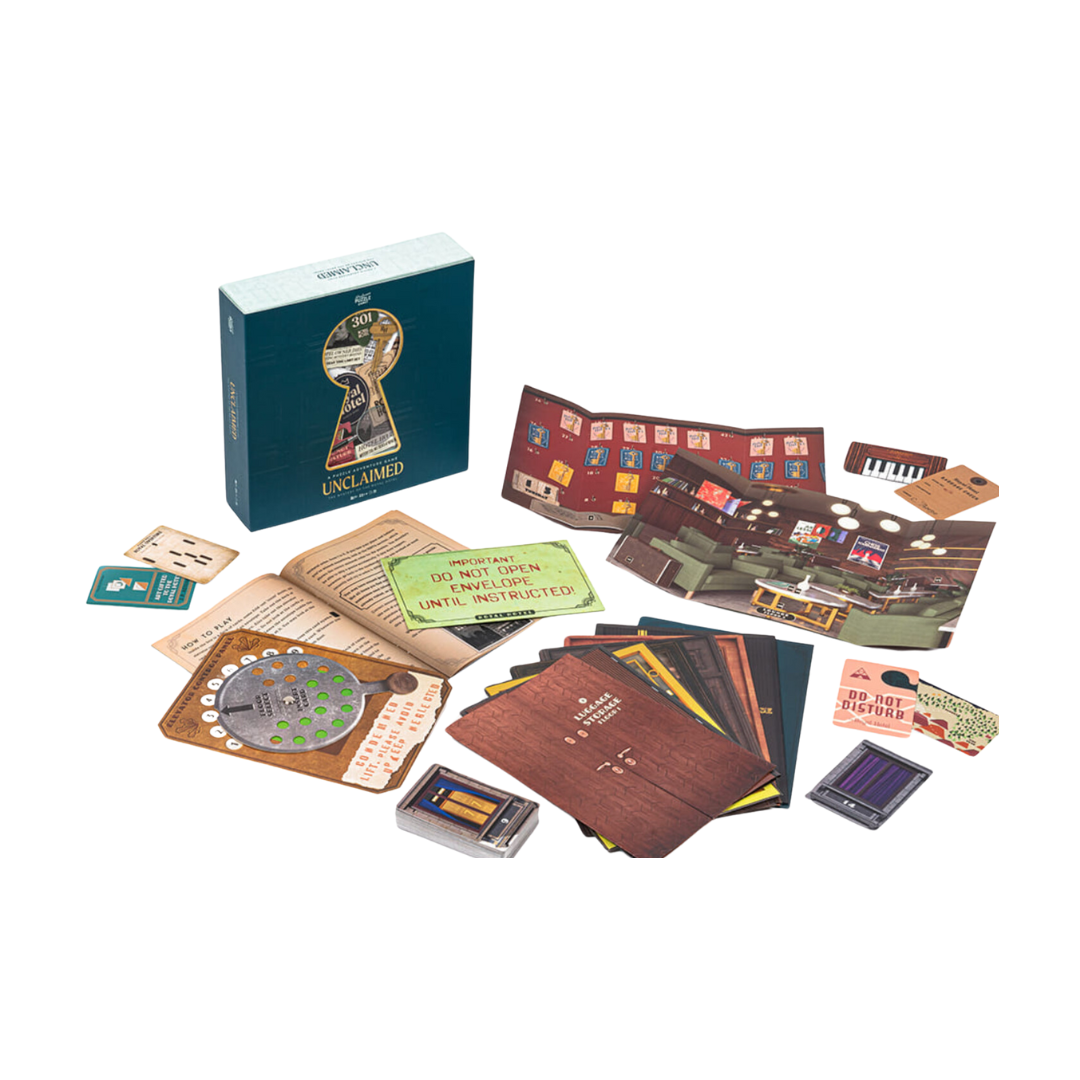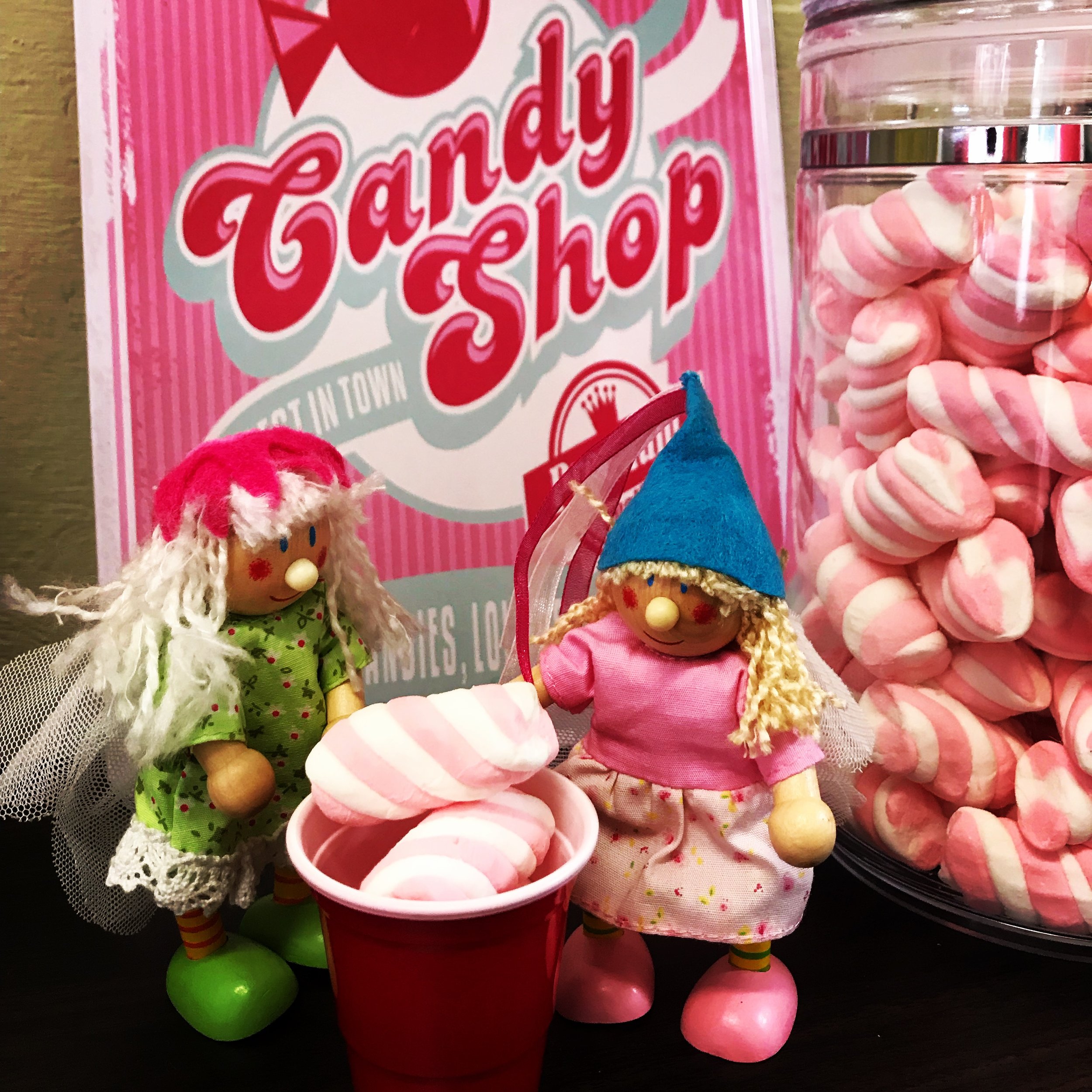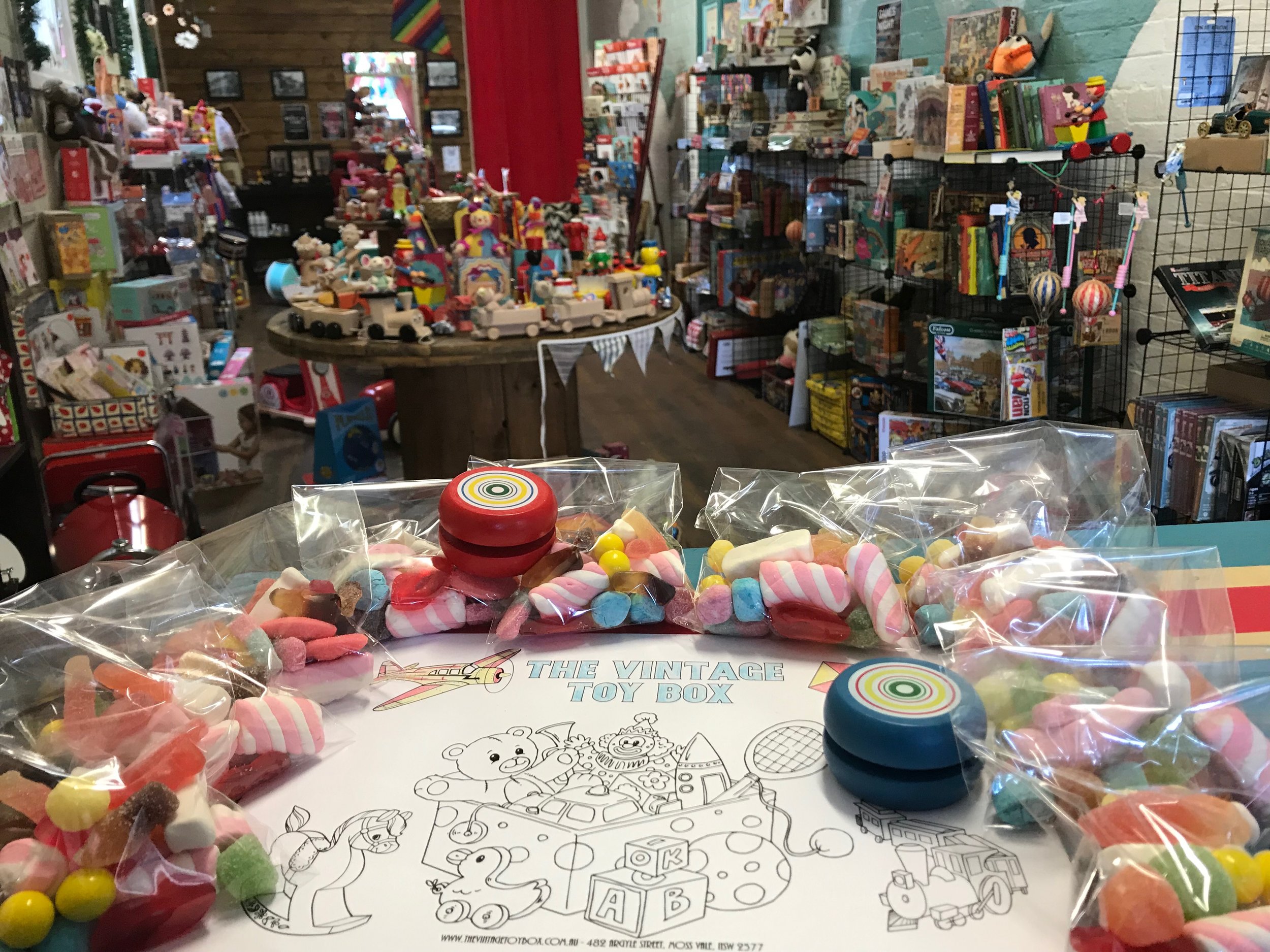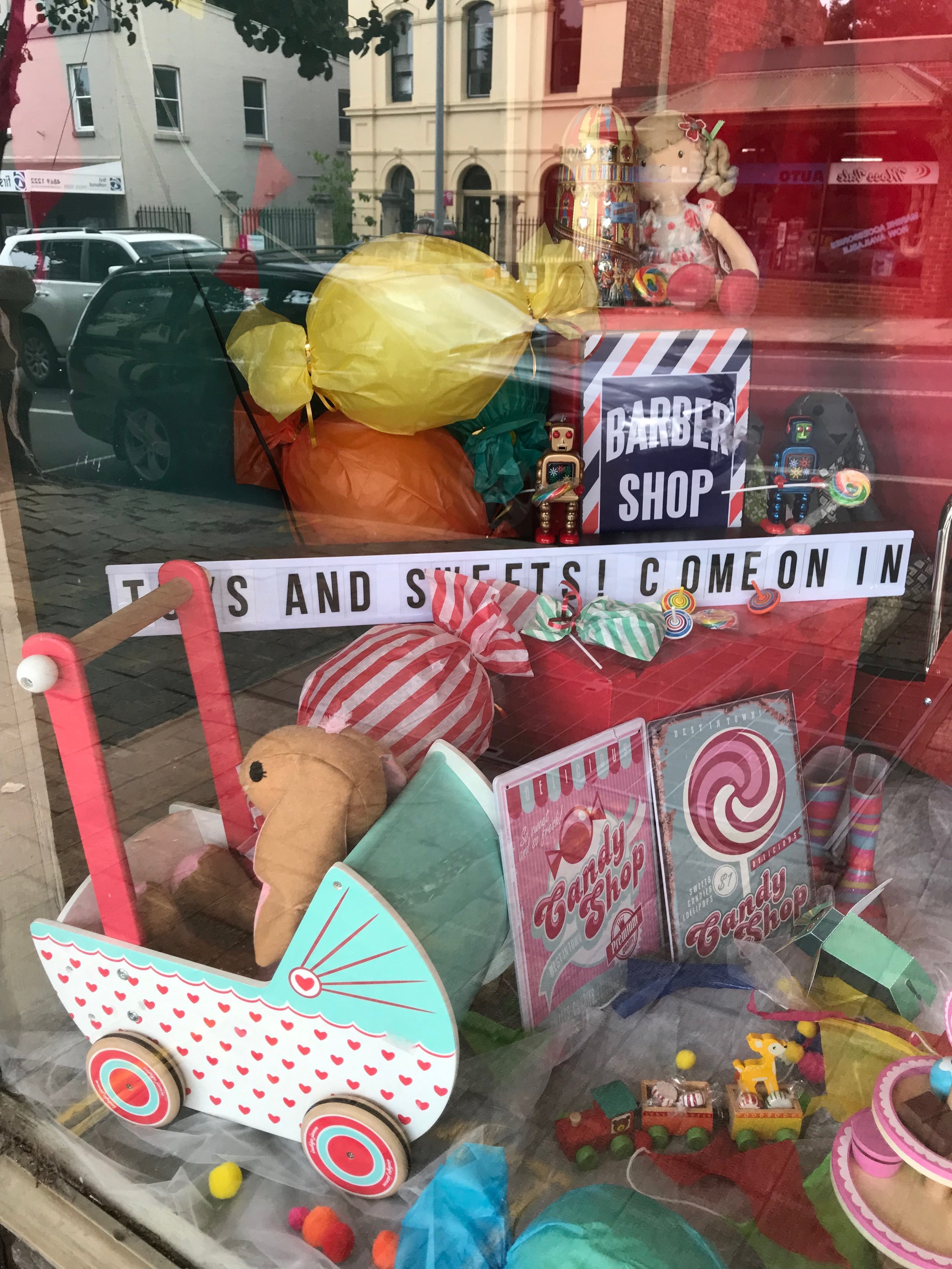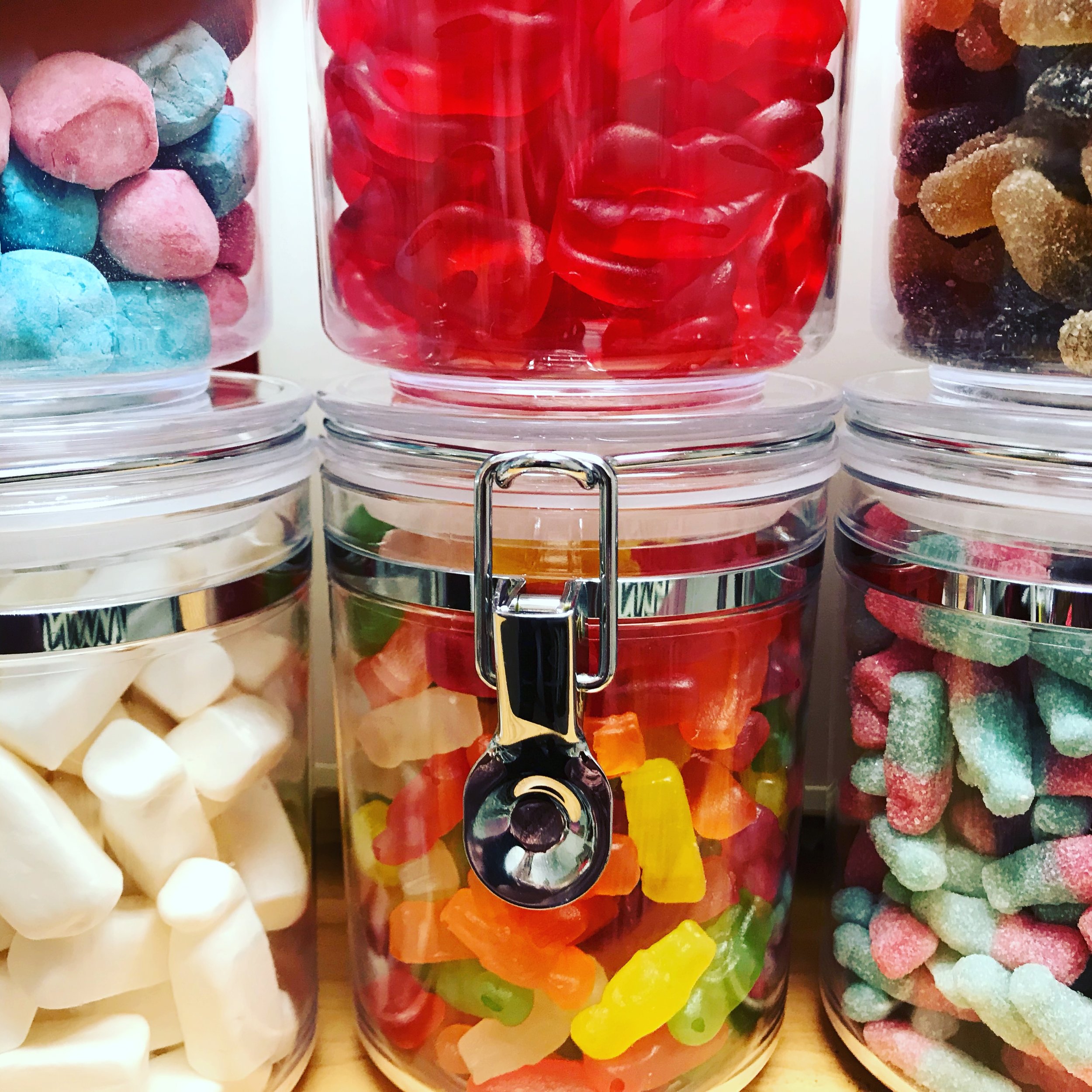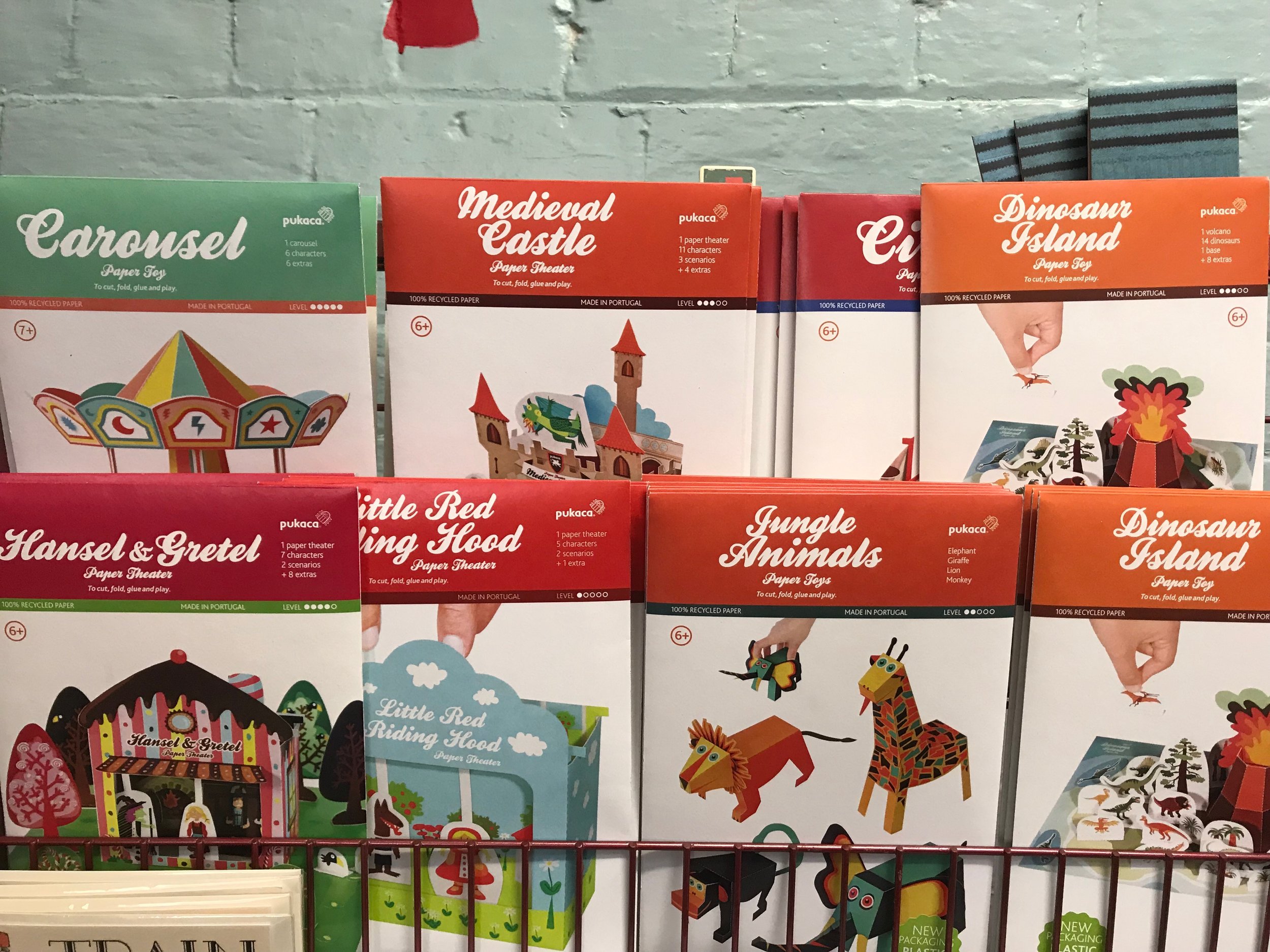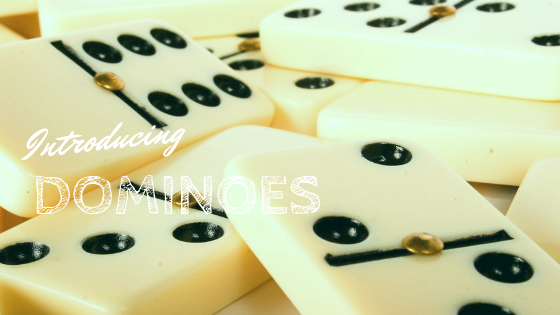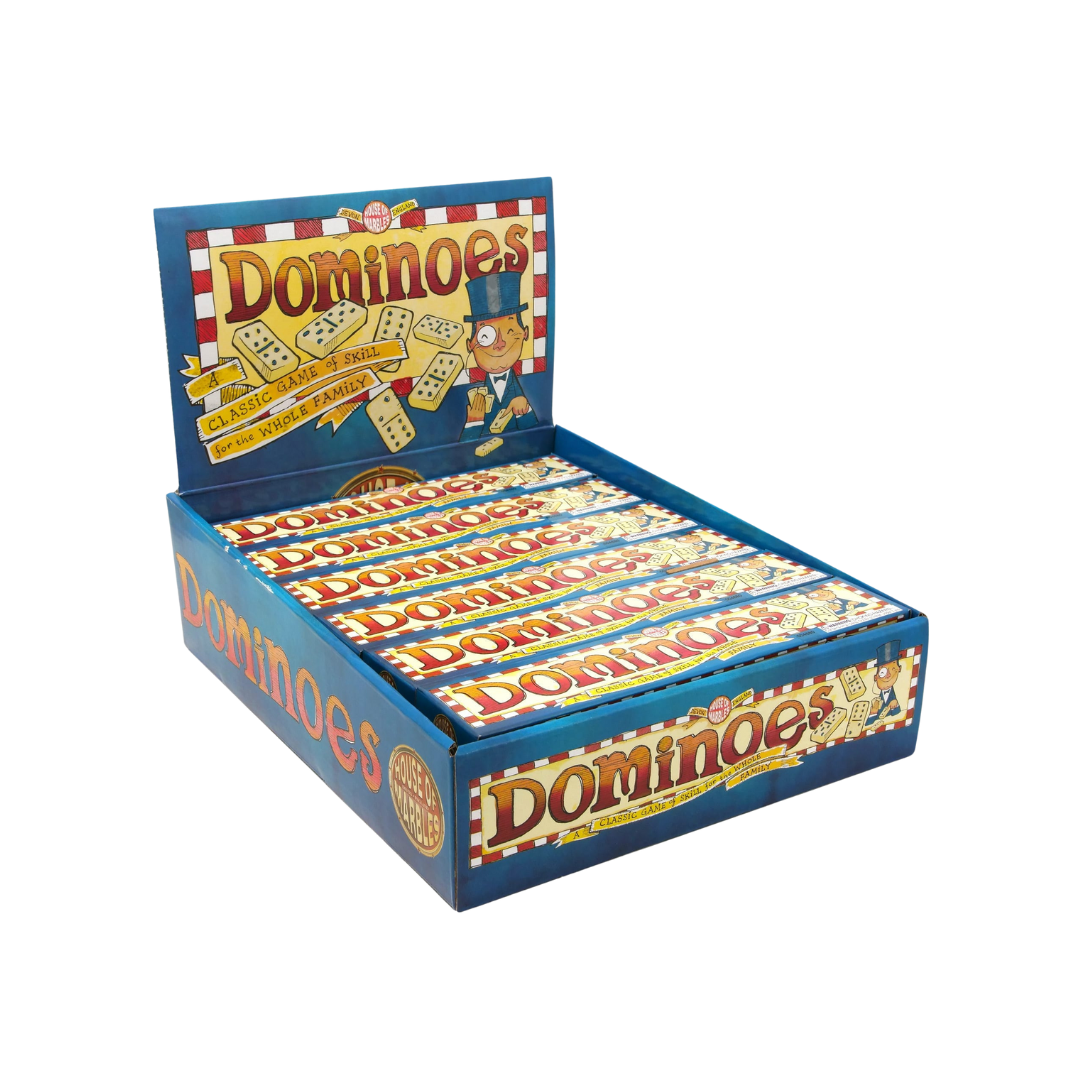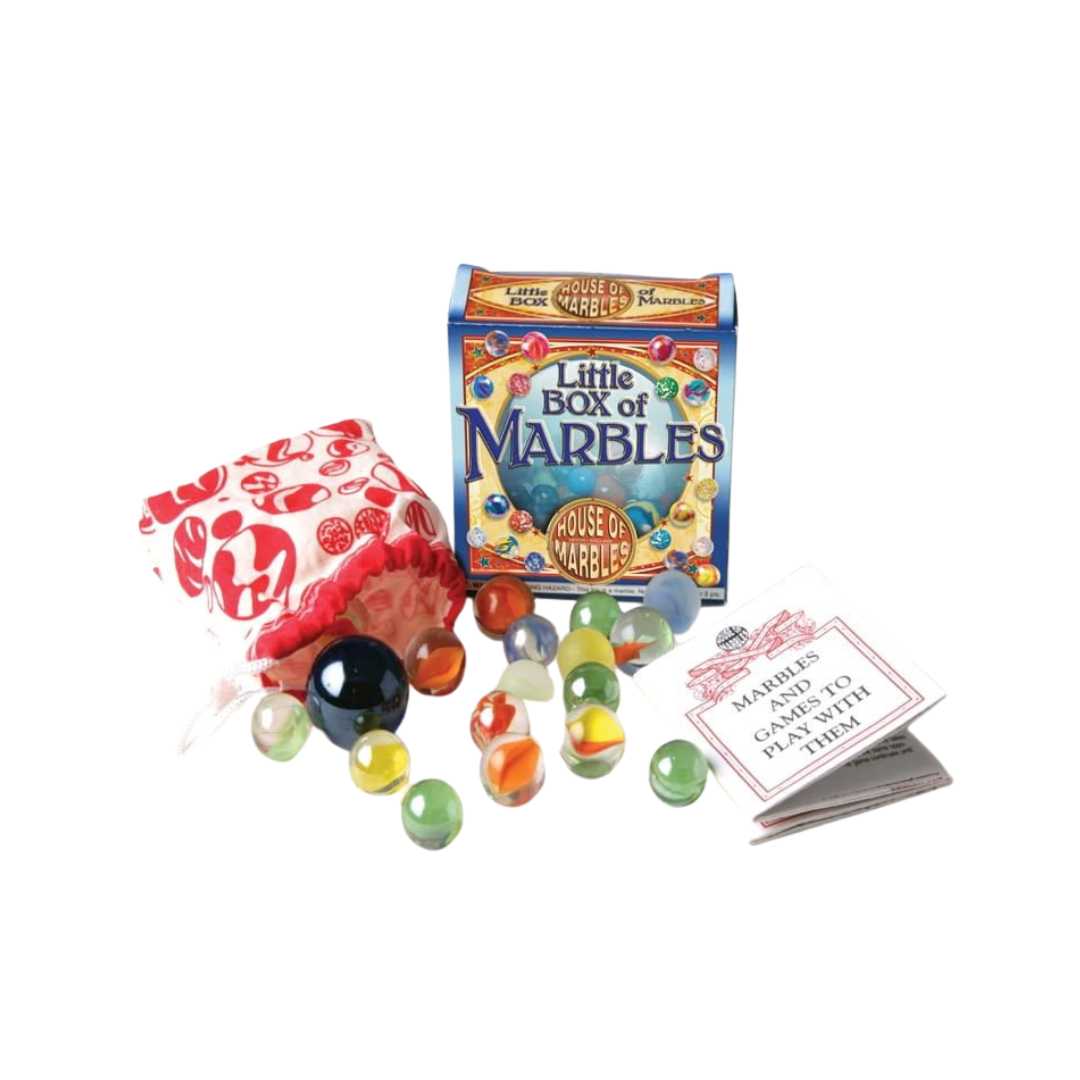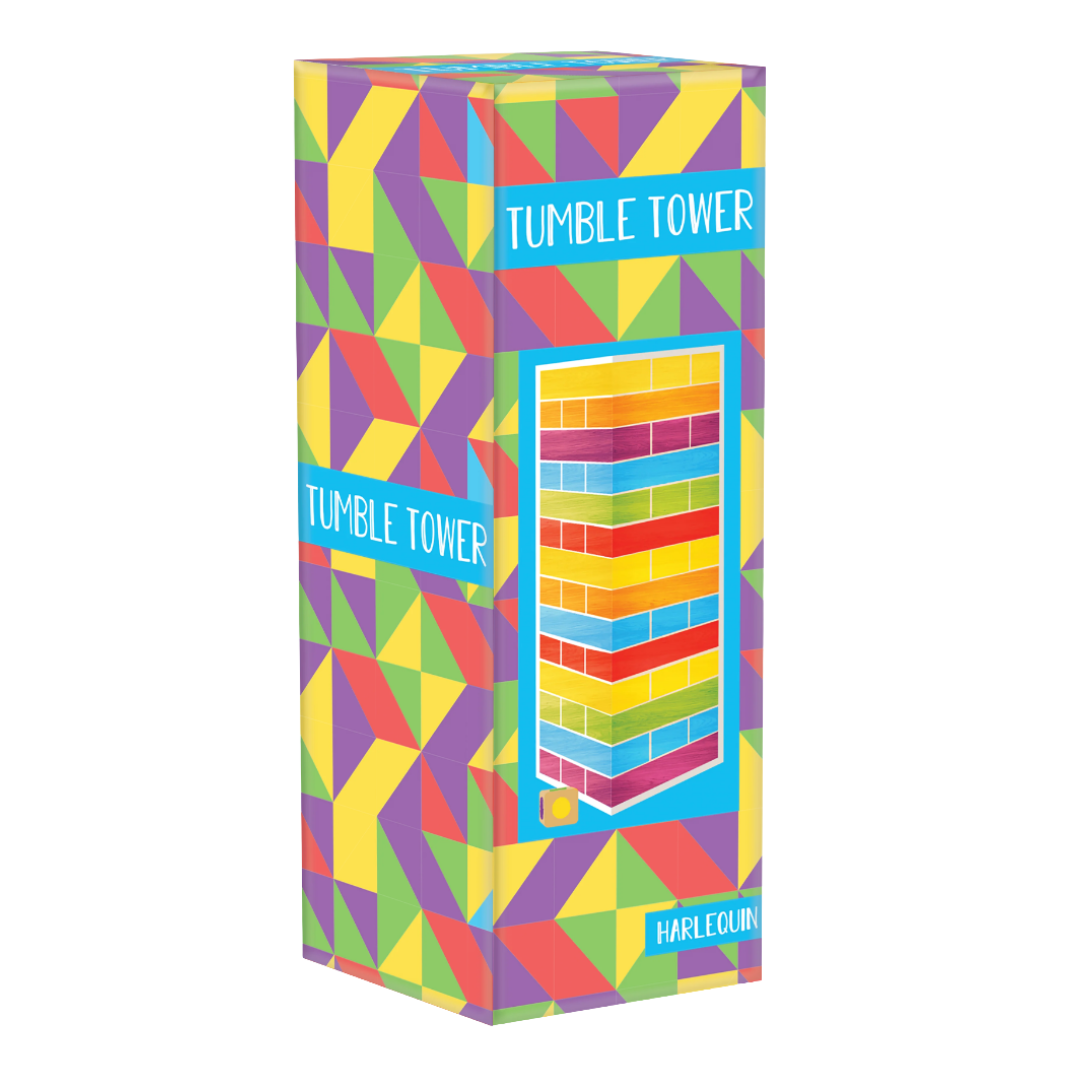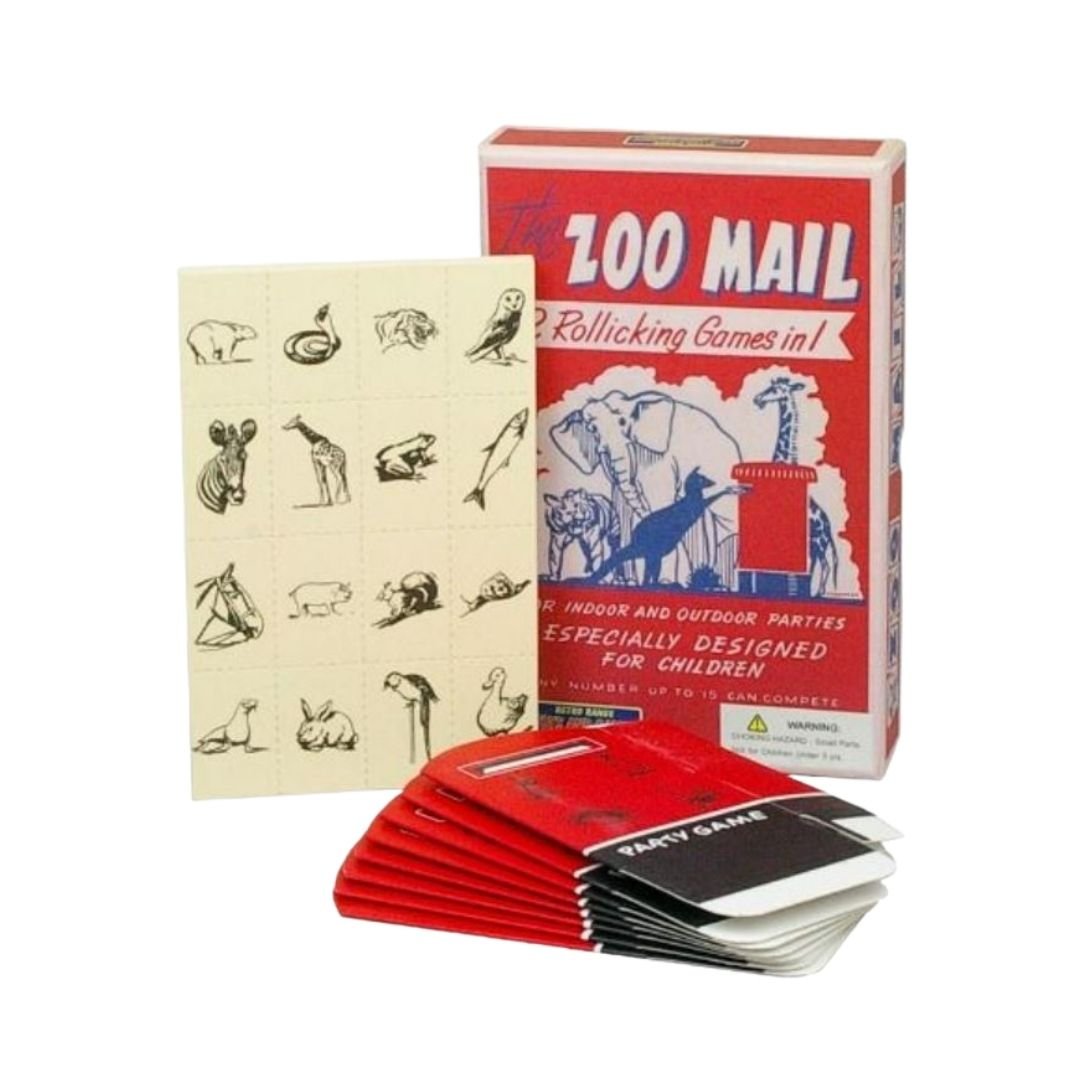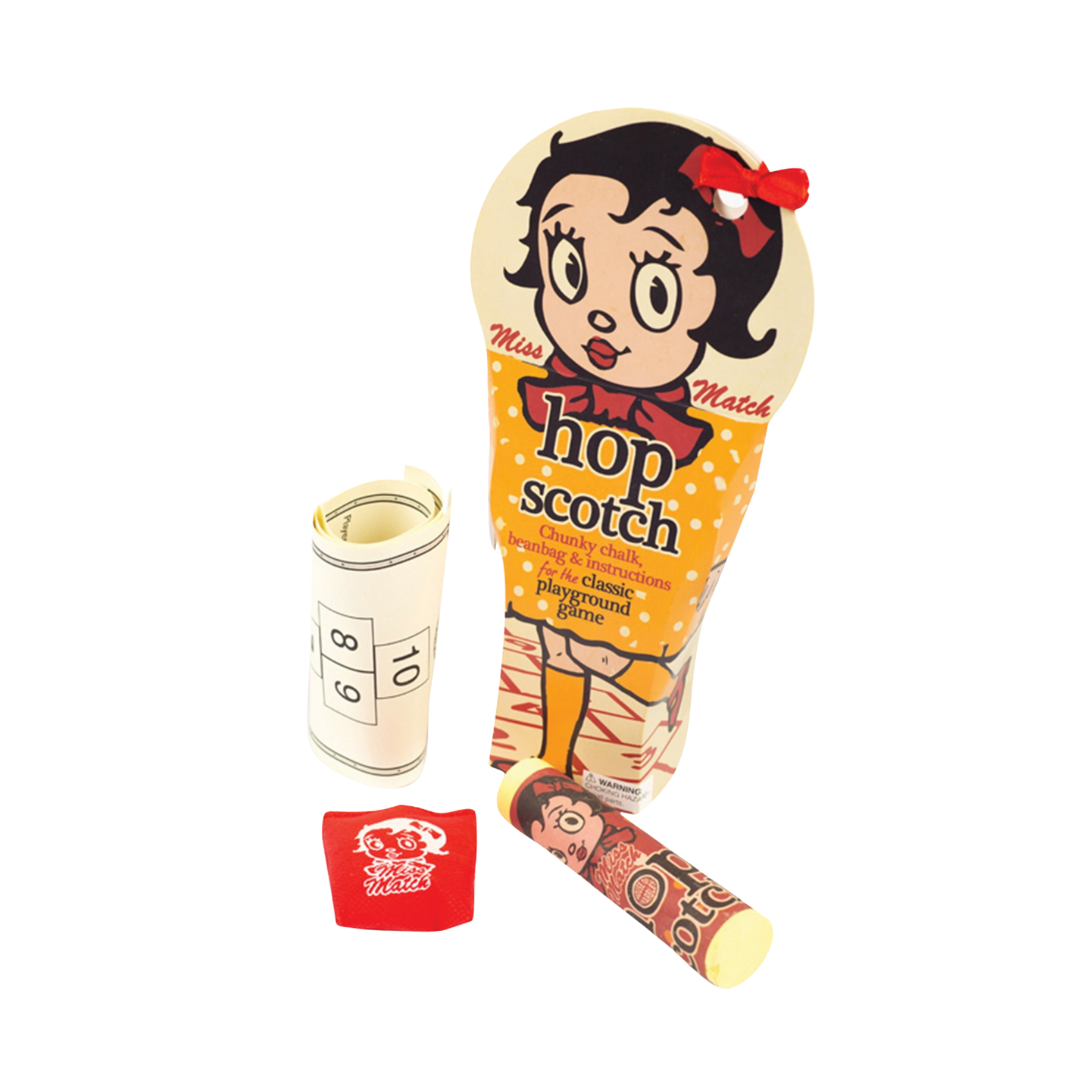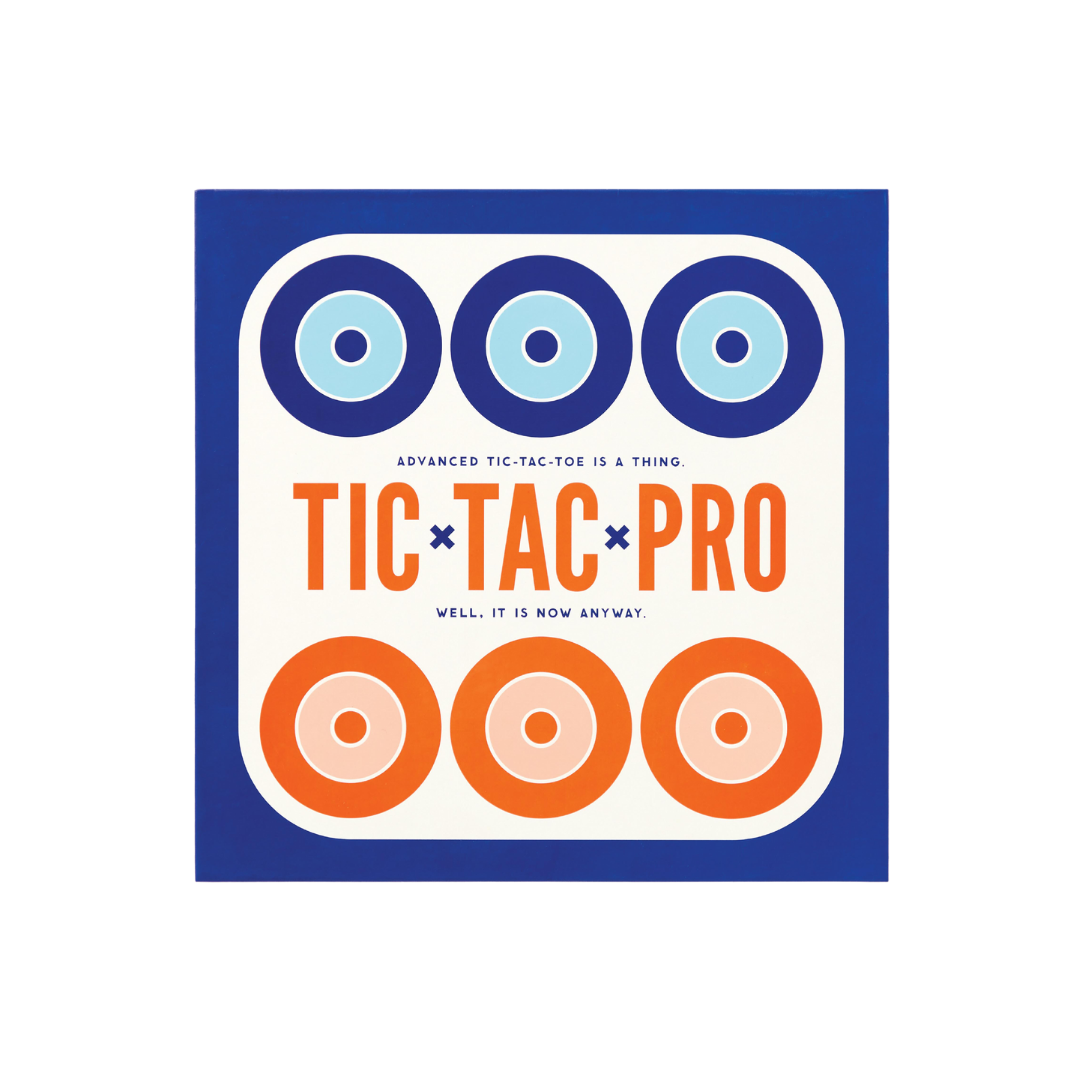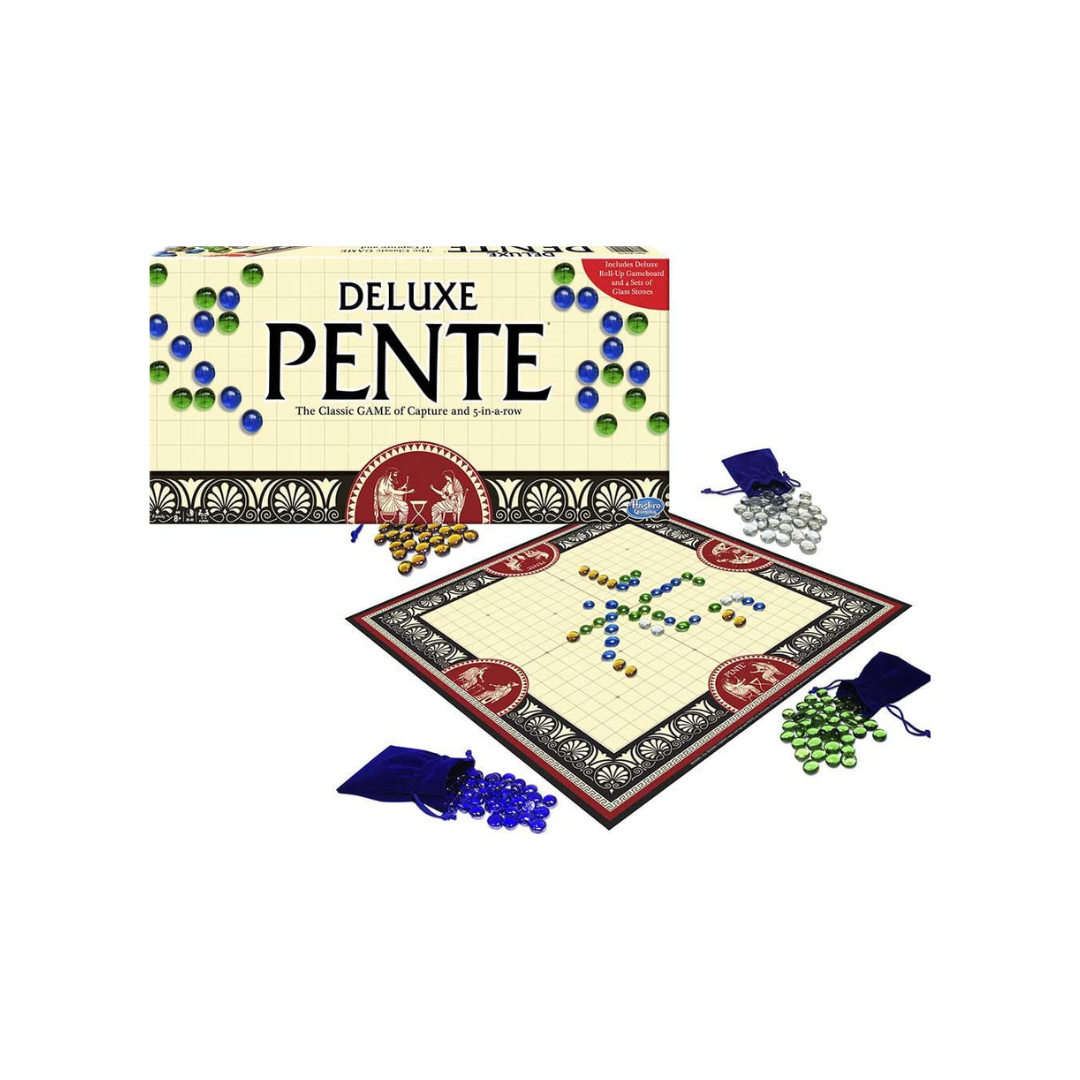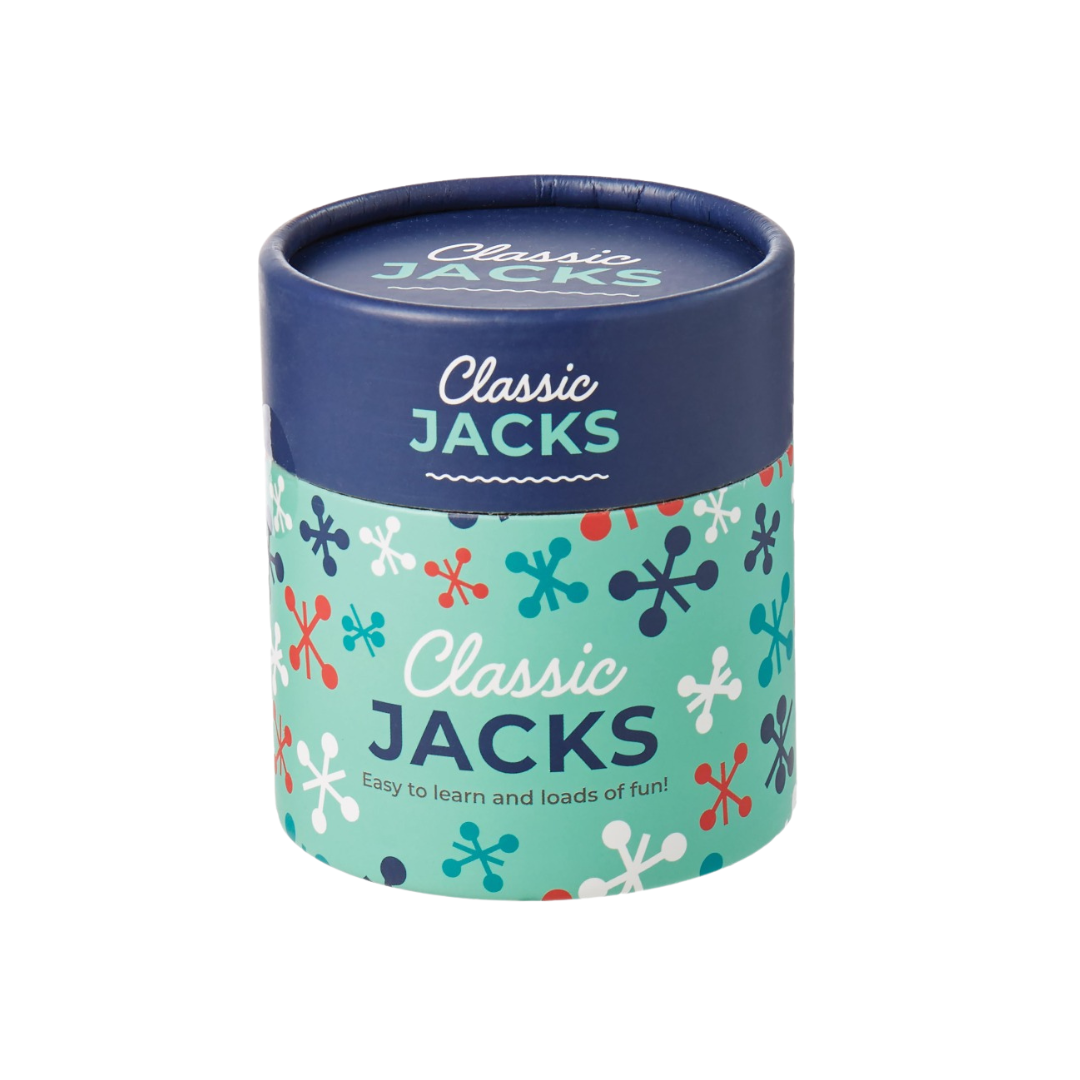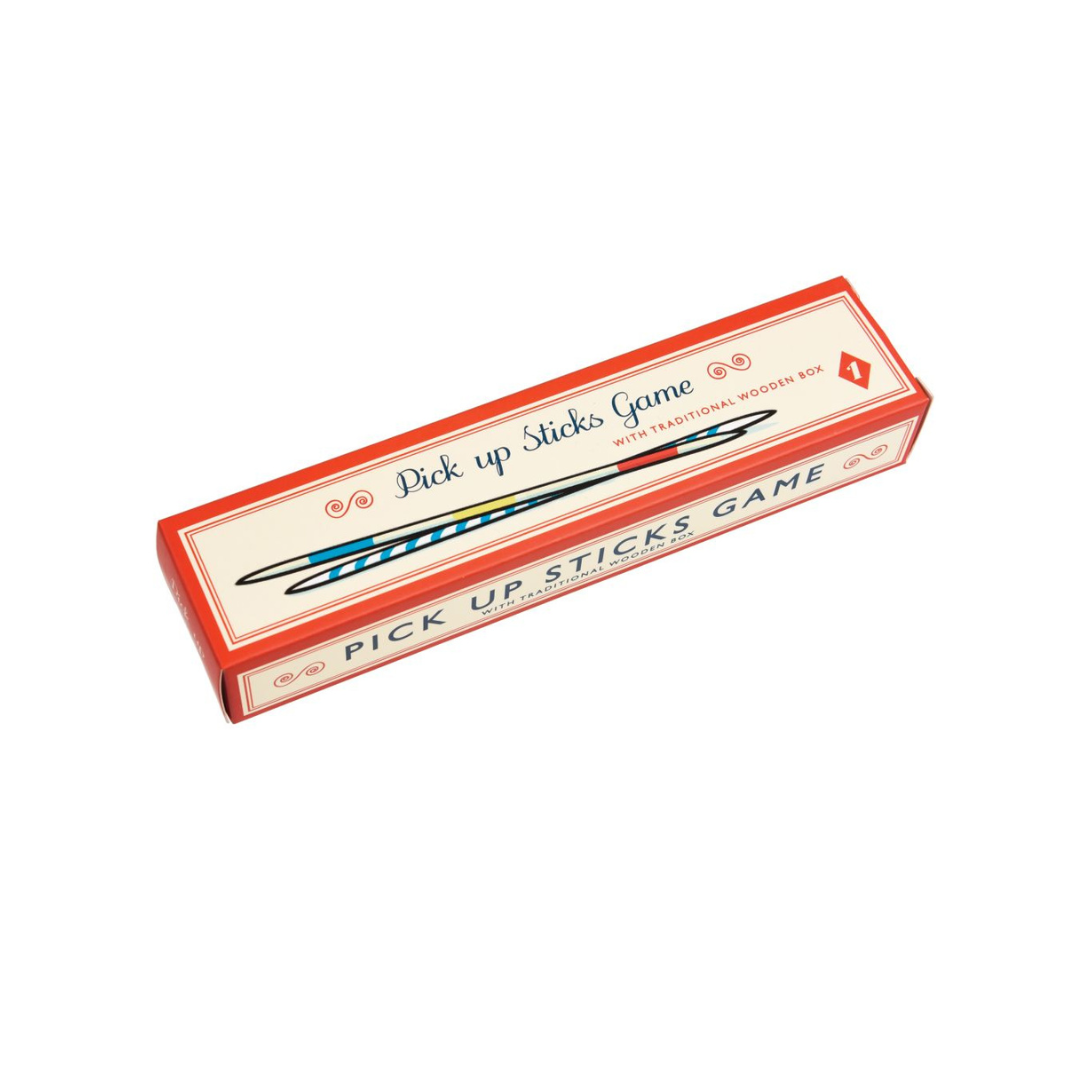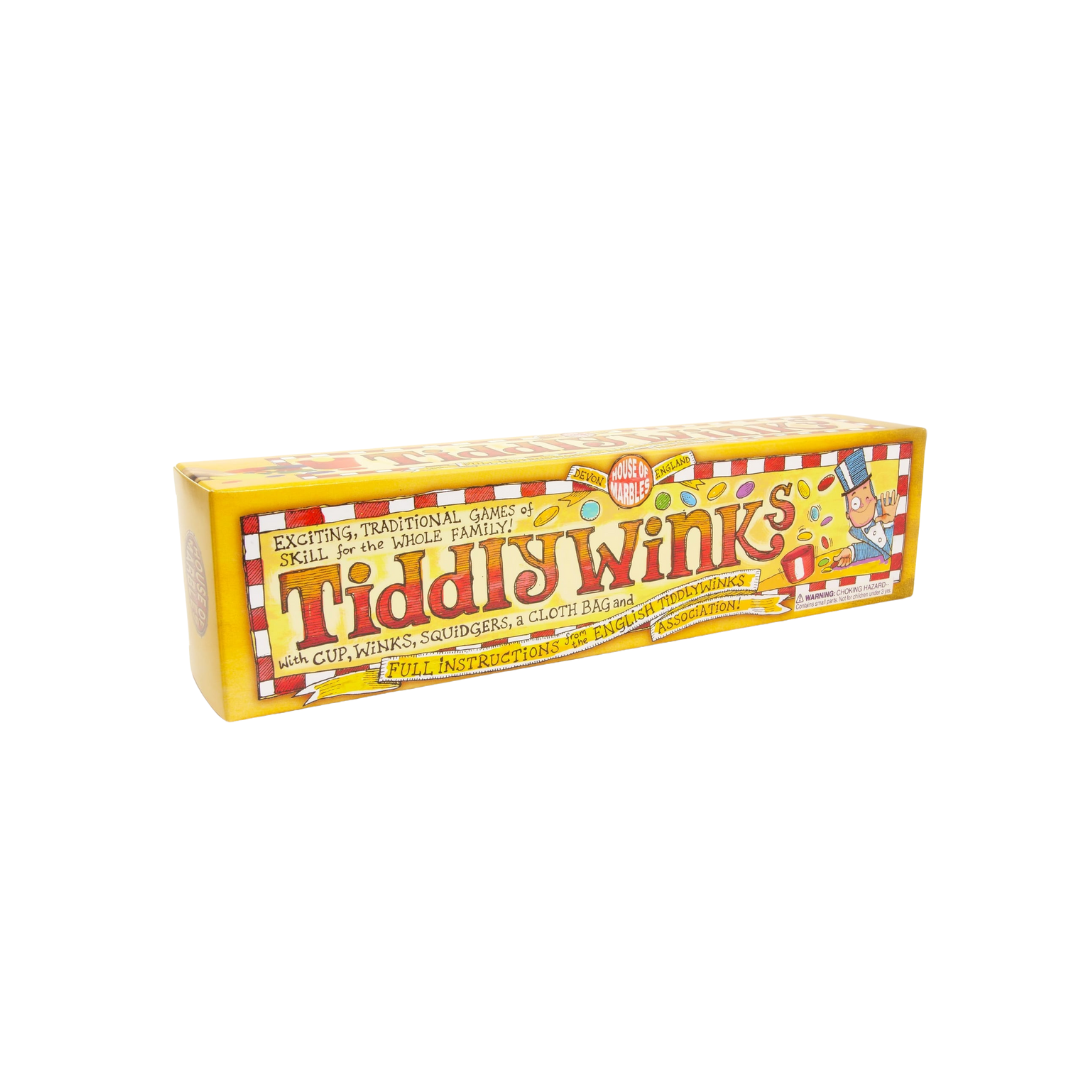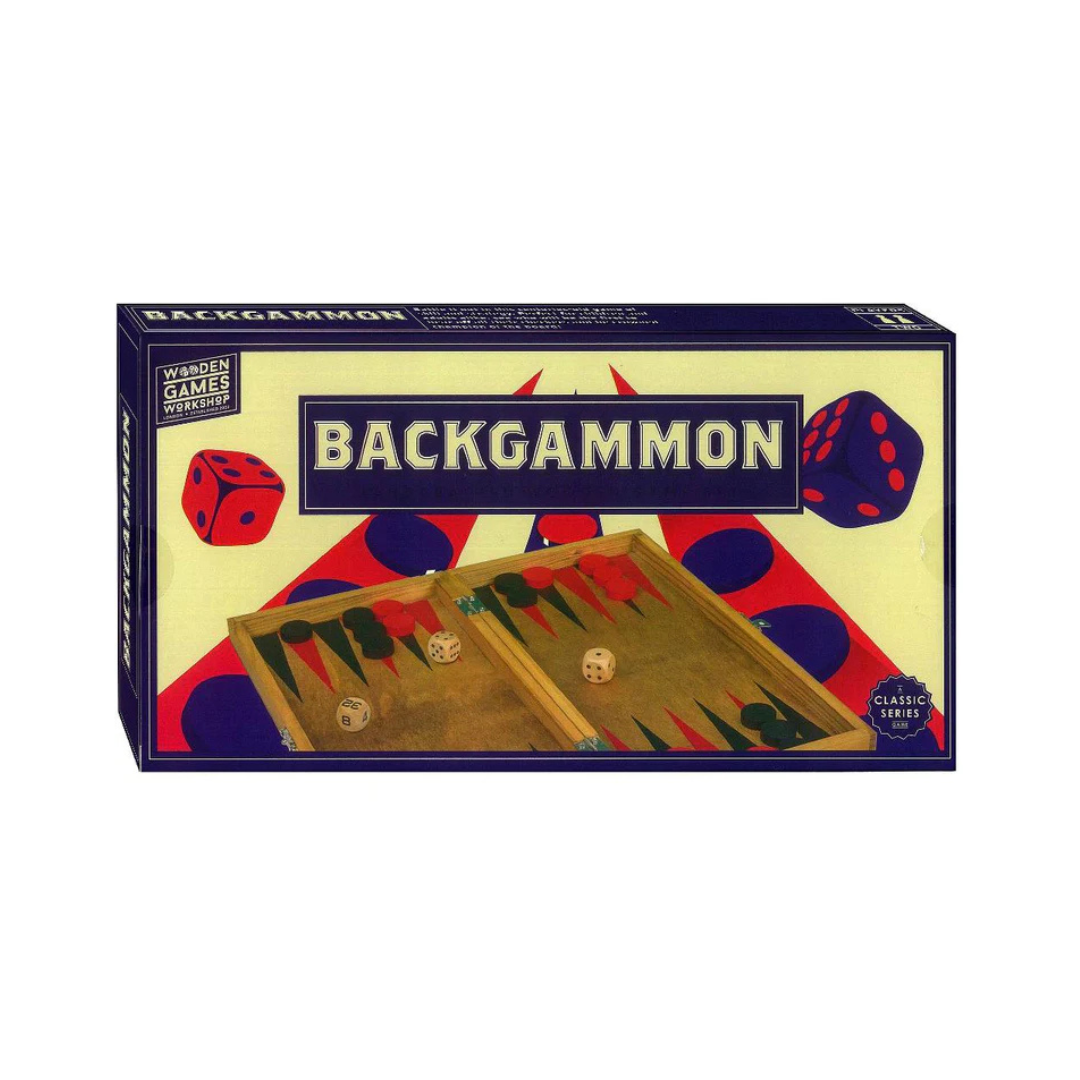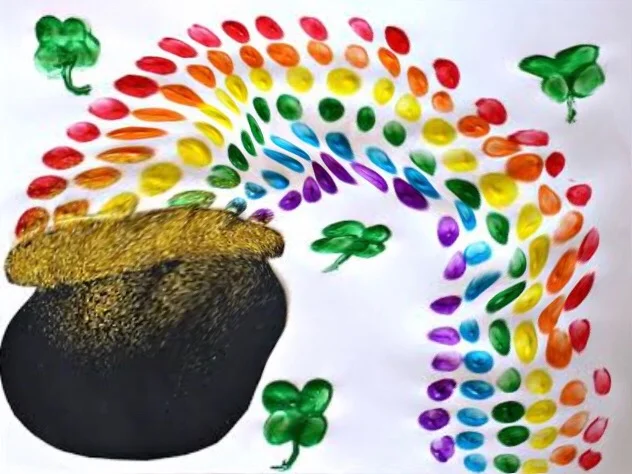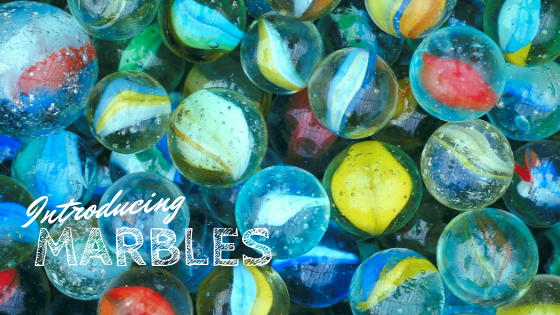Classic Toys | Wooden Toys
Wooden toys have been a constant in children’s lives in households across the world for centuries, never going out of fashion, and always in favour. You’d be hard pushed to find a child’s toybox without a classic, well-built wooden toy or keepsake hiding away, revisited time and time again
Wooden toys have been a constant in children’s lives in households across the world for centuries, never going out of fashion, and always in favour. You’d be hard pushed to find a child’s toybox without a classic, well-built wooden toy or keepsake hiding away, revisited and played with time and time again.
Long ago, in the Roman and Greek Empires, children often played with horses, chariots, dolls, swords, spinning tops and more - all expertly carved from wood.
Fun Fact: Archaeologists have found wooden toys that date back to around 1200BC.
One of the most interesting and significant wooden toy finds was by archaeologists in Egypt who found a wooden toy tiger built with moving parts, believed to be around 2500 years old. When the tail was pulled the mouth would open, which just goes to show the imagination that was put into wooden toys even thousands of years ago.
In Germany during the early 1700s toy makers began to make a variety of toys from all different types of wood, with travelling salesmen selling wooden toys from their horse and carts all over Europe. Many would take orders in advance for special occasions as the popularity for wooden toys grew. Wooden puzzles, transport vehicles, blocks, peg boards and pull along toys were among the most popular.
Pull alongs have been a popular variation of wooden toys since this time, but they haven’t always been made solely of wood. Other materials used to make pull along toys included clay, tin plate and cast iron.
Wooden pull along toys were first mass produced in 1875 in a factory in Massachusetts by the W.S. Reed Toy Company, along with wooden circus toys, sailing boats and paddle boats amongst others. They were best known for the bright colours of the graphics which were made by either lithographed paper glued to the wood or brightly coloured stamped designs. It was these bright colours that sealed the popularity of these simple, yet beautiful toys.
Skipping forward to the early 1900s wooden toy makers started to venture into making more intricate designs such as miniature animals, soldiers and doll houses complete with miniature wooden furniture, all painted in vivid colours and with lifelike details. The most popular wooden toy of them all evolved in the 1930s, with the introduction of wooden trains and train tracks, continuing to be a firm favourite a century later.
The Lego Corporation was surprisingly an early big player in the manufacture of quality wooden toys, before it commenced the production of the ever popular inter-locking plastic bricks. Kirk Christiansen began the now world-famous Lego Company out of his Danish workshop in 1932, with wooden toys being the very first theme from the Lego empire. Plastics were then introduced in 1940, and then finally the Lego that we are all familiar with today was released in 1949.
With the introduction of other plastic toys in the late 20th century, the low price of plastic mass production, and the introduction of electronics, sales of wooden toys saw a steep decline. That was however, until recent years.
There has been a steady increase in wooden toy sales over the last 5 years, as more and more eco-conscious parents are returning to the joy and simplicity of wooden toys.
Parents and grandparents realise that due to the cheap nature of plastic toys, they do not last as long as the more durable wooden toys. They last a few plays before breaking or being discarded, ending up in landfill, taking years to break down. People are now more aware that their production also contributes towards pollutants, and plastic in general is harmful to the environment.
Wood is a recyclable, natural material so it is much better for the environment than plastic. Wooden toys can take much more of a bashing, and you can still get generations of play out of them; a huge advantage … more bang for your buck!
Wooden toys are built solely to intrigue and inspire the imagination of the child playing with them. It is up to the child to decide how far their imagination will take them. There are no flashing lights or sounds interfering with their natural decision making ability or over stimulating them.
As wood is a natural tactile texture it stimulates a child’s senses as they touch it during play. It is said that playing with wooden toys provides a calm and relaxed environment and learning experience for your child.
In this instance, simplicity truly is best. Wooden toys are here to stay. Check out our huge range of wooden toys.
Our Classic Toy Shop | Take a Peek Inside our Toy Box
Just as we close up the Moss Vale store to spend more time with our family, we wanted to capture the essence of one of the most rewarding adventures that we’ve been on.
We have been very lucky to have the awesome Emma working for us here at The Vintage Toy Box in our Moss Vale toy store - she has been a breath of fresh air, a trusted and much valued employee, a window dresser extraordinaire, and now a great friend. Just before we close up the Moss Vale store in a couple of weeks to spend more time with our family, we wanted to capture Emma’s experience of sharing one of the most rewarding adventures that we’ve been on. Thank you Emma for being such a fabulous member of our toy store family - we couldn’t have done it without you!! Over to you Emma …
“Goodbye #UpperArgyle” by Emma Stuart
When I first applied for the job at The Vintage Toy Box I never imagined that working here would be so much fun. I mean, I knew working in a toy shop would be fun, but the vibe and energy that comes from the shop is way better than an average run-of-the-mill generic toy shop. There’s something really special about The Vintage Toy Box. The shop has been such a great place to work, the atmosphere and being around toys made my day – everyday. Not many people get to work in a place that they love to work in, nor do they get to have as much fun as I did as they work.
What made it more fun was the people. Customers, people just popping in to say hello, the local kids running in for their lollies after school, the local businesses that support each other, and of course my boss, Saskia (edit: Emma had to say that!).
I am so lucky to have had this experience. Saskia is such an awesome boss lady (edit: and again!). She accepted my areas for development and pushed me to the full potential of my strengths. She has helped me build my confidence and encouraged my creative side, which has expanded so much since I started working at The Vintage Toy Box.
Saskia asked me to put together a little write up about my favourite experiences working in the shop. It was so very hard to choose just a few, but here goes ….
I loved working on the window displays because not only did it showcase some of the awesome toys waiting just inside the door, but I loved watching people walking by, stopping to have a look and walking off with a smile. I’ve often wondered what triggered those smiles, was it a memory from their childhood? Maybe they played that hopscotch game at school; ran around the backyard with Spud Guns with their siblings; they could have had a toy robot similar to the one staring back at them through the window or maybe they played that board game with their family on family game night. It didn’t matter the reason behind the smile, it was just nice to know that just a peek through the window was enough to make someone smile.
I really enjoyed doing research and learning about the history of toys. How they used to be made and played with in the past is so intriguing to me. It is fascinating seeing through the decades how the toys have changed and what became popular based on the world changing, during and after war time and the difference new technology impacted the sale of toys and changed the way they were made.
Another personal favourite thing of mine about the shop is the stories that people would tell while they were shopping. Whether it was a story about begging their parents for a wind-up tin plane and how happy they were to open one up on Christmas morning, how they’ve treasured it over the decades and how it still sits on their shelf, or how they used to save the bone out of a lamb hock after a Sunday night roast and after they collected them up over a few weeks they would have enough to play Jacks with them. Stories about how they used to make knitting dolls out of old sewing bobbins and nails, or sitting down with a sibling or parent to draw and cut out outfits for paper dolls. Eagerly waiting outside the back shed door for their father to put the finishing touches on their wagon so it was ready to race with the kids down the road. It is so interesting to hear of the way toys used to be made by families who couldn’t afford to go to the shop and by the latest toys. I also enjoyed hearing the friendly bickering between family members as they reminisce about playing and there was always one cheeky cheater … who still denies it!
One day I was sitting at the front counter doing some history of toys research and I had Fleetwood Mac up full volume through the speaker, singing along as I worked and a nice lady worked in. I awkwardly laughed with embarrassment as I rushed to turn down the volume, she just laughed and said ‘turn it back up, I love Fleetwood Mac!’ so up went the volume and she sang as she shopped; it was great!
So there you have it, a few of my favourite memories from working at The Vintage Toy Box and what is next for me? Well, I’ll still be around, in the background, still researching, writing, putting together social media posts and helping Saskia with community events and all the new exciting things that she has planned and of course – turning up Fleetwood Mac until the speaker beeps at full volume.
Until next time, Emma. x
If you want to show your appreciation for Emma, as much as we do, vote for us in the Australian Local Business Awards https://thebusinessawards.com.au/business/48911/The-Vintage-Toy-Box . Go on, it’ll make Emma’s day.
Moss Vale ... it's been fun!
We have an announcement …. It wasn’t an easy decision to make, but we know it’s the right one for our little family, and we’re now ready to share it with you.
Some decisions come easier than others. Some decisions fly at you like water off a duck’s back, and some need to be digested, regurgitated, revisited, prodded and pruned. Last week we made a decision that falls into the latter category, but now that we’ve made it, we’re relieved and thankful that we have.
It wasn’t an easy decision to make, but we know it’s the right one for our little family, and we’re now ready to share it with you, in the hope that in doing so, you’ll decide to come on our next journey with us, because we sure have enjoyed having you all along for the ride!
The next part of our journey begins on the 1st July 2019, exactly one year to the day since we began our last chapter, the opening of our wonderful and magical Moss Vale store. What a chapter it’s been! It’s been fun, games, laughter and friendship. We’ve met some beautiful people (big and little) from our mini wonderland, and have been welcomed into such a wonderful community with open arms. We’ve been embraced, we’ve been loved, and we’ve shared joy. So much joy. We truly can call Moss Vale home. For that we are thankful.
Whilst we have been hanging out in our magical emporium however, we had a niggling feeling, one that wouldn’t go away. We realised that whilst we were watching other children have fun in our store, we were missing out on spending precious time with our own little person. We weren’t following our own message of ‘enjoying the little things in life, before they become big things’. We realised that we’d missed out on a whole year of Saturday fun and family exploring.
So, Moss Vale, it sure has been fun, we’ve loved being part of the high street, but we’re ready to now take a back seat and enjoy the landscape from a different angle. We’re looking forward to some foraging of our own, enjoying all that the beautiful Southern Highlands has to offer, but enjoying it as a family.
It’s not’ goodbye’ however, it’s merely a ‘see you soon’, as we’ll still be completely online. To say a big thank you to Moss Vale and to the Southern Highlands we’ll be offering a free drop off or pick up service for all online orders to anyone within a 15km radius of Moss Vale town centre, after we close the front door of our bricks and mortar shop for the last time on Saturday 29th June 2019.
When one door closes … another one opens. A heartfelt thank you to all of you who have supported us on our journey this far. We look forward to sharing the next adventures with you … here’s a clue … you may see up pop up in Fyshwick in Canberra very soon!
The Vintage Toy Box family x
Check out our awesome Closing Down Sale with a whopping 30% off all our large items. Available for in-store pick up only and while stocks last.
Lollies Through Time
Now that we’ve also recently opened up a lolly shop in-store we thought we’d indulge our sweet tooth and take a look back at lollies through the ages, and learn a little about candy through time.
Now that we’ve also recently opened up a lolly shop in-store we thought we’d indulge our sweet tooth and take a look back at lollies through the ages, and learn a little more about candy through time.
Lollies can be traced all the way back to the ancient civilisations. In Egypt the Egyptians combined honey with various nuts and fruits and across the seas in Ancient Greece, China and Arabia they also used honey to bind fruits and flowers together.
Fun Fact: The word candy came from the Arabic word ‘Qandi’ which means ‘made of sugar’.
One of the oldest documentations of hard candy was Barley Sugar, made from Barley grain. Between the 6th and 4th centuries BCE the Greeks and Persians discovered a reed that grew in India that produced ‘honey without bees’. This marvel later became known as sugar cane. Pieces of sugar were produced by boiling the sugar cane juice. In ancient India this was called Khanda and dubbed the original candy.
Fun Fact: The word sugar derived from the Sanskrit word Sharkara.
Before the Industrial Revolution candy was actually considered as a form of medicine and was used to cool a sore throat or to calm the digestive system. Even earlier, during the Middle Ages candy was a combination of spices and sugar that were used to aid digestive issues and it was even available in tablet form.
Fun Fact: A very popular medicinal candy was called Chamber Spice and was made with ginger, cloves, juniper, berries, pine kernels, almonds and aniseed, all dipped in melted sugar to combine them all together.
In 1847 the invention of the candy press revolutionised the way candy was made, it made it possible to produce various shapes and sizes of candy all at once. Soon after in 1851 lolly makers began to use a revolving steam pan to assist in boiling the sugar which meant that confectioners did not have to stand over boiling sugar and continuously stir it, (and a few candy makers were saved from the boiling pot!).
Fun Fact: The lollipop was invented by a man named George Smith in 1908; he named it after his horse.
In the later 1800s lollies began to grow with more varieties being made. One of the first was Candy Corn followed closely by a butterscotch candy called Reed’s Rolls, Juicy Fruits, Tootsie Rolls and Peanut Brittle. Dum Dums lollipops were invented in 1924 with seven original flavours; lime, orange, lemon, coconut, pineapple, grape, butterscotch and cherry. They were called Dum Dums as the inventor said it was easy for children to say.!
Lollipops have been around long before Dum Dums came into the shops. They were being eaten in the Middle Ages as boiled sugar was eaten off sticks as it was a lot easier to consume. The famous Chuppa Chup lollipops were introduced in 1958 in a clear wrapper. It wasn’t until 10 years later that the iconic wrappers were brightly printed, swimming in colour.
Fun Fact: In 1950 Bobs Candy Canes were introduced to the shops and the brand was known as Cris Cringle.
The 1960s was a huge decade for lollies with Starburst Fruit Chews, sugar free gum, Razzles and Sweethearts hitting the market. The early 1970s saw the introduction of Laffy Taffy with a joke inside every wrapper.
How do you rock a baby alien to sleep? You rocket!
Why couldn’t the shoes go out to play? Because they were all tied up!
What room can no one enter? A mushroom!
These were just a few awesome jokes that were inside the Laffy Taffy wrappers.
Fun Fact: During 1958 the classic, fun, retro lolly was made on a string and it quickly became known as the Candy Necklace. However, the inventor and location still remain a mystery.
The ever so popular Pop Rocks were accidentally invented by a man named William Mitchell in 1975. He was a food scientist at General Foods, and he had a plan to make an instant soft drink. He put some sugar flavouring and mixed it with carbon dioxide and when he put them together the sensational lolly was born. It became extremely popular around the globe as it caused a mild ‘exploding’ sensation as soon as it is placed in your mouth and created the awesome crackling sound that people of all ages still love to hear.
Fun Fact: A confectioner named Leo Hirshfield named the Tootsie Roll after his daughter, her nickname was Tootsie.
School Holiday Fun | Upper Argyle Easter Hunt
Looking for something to do with the kids in the Southern Highlands this Easter long weekend? Why not take them on an Upper Argyle Easter Hunt in Moss Vale.
Looking for something to do with the kids in the Southern Highlands this Easter long weekend? Why not take them on an Upper Argyle Easter Hunt in Moss Vale.
Answer all of the clues in each participating business to be in with the chance to win a pack of Easter goodies!
Runs until SATURDAY APRIL 20th 2019. Entries must be received by 3:30 PM
Take the completed entry form to The Vintage Toy Box for marking by 3.30 pm on Saturday 20th April to be in with a chance of winning. All correct and complete entries will go into the draw to win an Easter pack crammed full of Easter goodies.
Children must be accompanied by a parent or guardian. Child and adult must be present at the time of draw to collect prize. Redraw will occur if winner drawn is not present. Employees and relatives of employees are not eligible to participate in draw. By participating in this draw you consent to your details being collected for marketing purposes by each of the participating businesses. In winning the draw you consent to your photo being used in our marketing material.
Drawn Easter Saturday 20th April at 4.15 pm at the Taphouse.
#UpperArgyle
Download an entry form or pick up in-store from Friday 12th April 2019.
The Benefits of Classic Toys and Games
Bonding with children over toys is enjoyable and beneficial to all involved, but there are also some other fantastic advantages to keep in mind when picking out toys for your little cherubs.
Bonding with children over toys is enjoyable and beneficial to all involved, but there are also some other fantastic advantages to keep in mind when picking out toys for your little cherubs.
Completing a puzzle helps with advancing a child’s fine motor skills as they learn to place puzzle pieces in the correct spot and the right way round. Puzzles also assist with hand-eye coordination and help children to understand patterns. We have a wide range of puzzles that are different sizes, shapes and a variation of pieces to challenge young ones and to ensure that will not get bored.
Do you remember the feeling you used to get from completing a puzzle? The experience leads to an immense sense of satisfaction, which in turn leads to a boost in self-esteem.
Playing a memory game or matching game with your child can help them to increase their attention span, and improve their cognitive skills. It is a great way to exercise and train the brain for visual memory. As memory and matching games are simple to play they can be enjoyed by children of all ages - younger children can bond with older children over a simple game. We have a large range of memory and matching games in store.
Craft can be enjoyed by all, whether it is painting, modelling with PlayDoh, building with blocks or drawing. Craft builds self-confidence, assists with decision making and gives children a sense of identity as they discover their creative flares whilst being their own person, (all while having fun!). Craft toys are also a great way for children to express themselves. We love to encourage children to be their own person and express themselves and have a fantastic range of craft activities in-store to help them do this, including Paper Dolls, Origami and paper craft sets, knitting dolls, stamp sets, stickers and flower presses.
Imaginative play has infinite possibilities and we stock a large range of play sets where children and adults can bond over tea parties, cook with wooden utensils, cut up wooden fruit and much more. Imaginative play builds a child’s self-confidence and it is a stepping stone to social play as they invite others to play with their tea cups filled with imaginary tea, or in their kitchen making imaginary dinner for their toys. Imagination play is also great for a child’s emotional development as they can express their feelings through re-enactment of certain experiences with their pretend play toys.
Musical instruments ignite all areas of a child’s development and skills. Playing musical instruments is great for toddlers and even if it doesn’t sound like anything rhythmical or melodic to us, it helps their body and mind work together. Music is a great way for young ones to express their creativity and they get a sense of accomplishment as they make sound come out of a piano, drum, harmonica or guitar. At The Vintage Toy Box we believe that it is important for children to express themselves by making music with instruments and we love to hear them making music in-store with all of our instruments and music toys.
Stuffed teddy’s, dolls and other soft toys provide comfort and security for your little one, giving them a friend to tell secrets to and confide in. They are also a great gateway to imaginative play as they role-play with their much loved toys. Children may for example act like a parent to other toys, putting them in charge of a situation, which in turn then builds up their self-confidence. We have a large range of soft toys which could easily become your child’s next loving best friend.
Sitting down as a family to play a family board game is a great way for a child to feel a sense of belonging and security as they play. Introducing family games at a young age can help with learning, teaching children how to share, how to take turns and how to loose without getting offended or upset. Another great benefit of family games is that it teaches children about planning and problem solving. We have loads of family games in store to intrigue adults and children alike, including all time classics such as Snakes and Ladders, Chess, Draughts, Ludo, and Game of Goose to name just a few. Enhance your family bonding time by grabbing a vintage inspired game today.
To check out all of these toys and games and much, much more, visit us in-store or browse or online store.
Our Toy Makers | Ephy's Craft | Soft toys | Crochet Toys | Knitted Toys | Amigurumi Toys
This week we meet one of Our Makers, and introduce you to the fabulous toy maker Ephy’s Kraft.
In a nutshell, tell us about your business
Ephy’s Kraft came about as a result of my love for crocheting. I particularly love to crochet miniature animal-like figures, mostly in the Amigurumi style (Japanese art of knitting or crocheting small, stuffed yarn creatures).
Tell us a bit about you
We moved to the Highlands about three years ago. Having visited on many occasions in the past 20 years we decided to escape Sydney to a more attractive rural area. My working background was 10 years working in After School Care. Prior to this I worked in IT at Qantas, and before this I was an industrial chemist. Such a wide range of careers, culminating in Ephy’s Kraft!
What inspired you to set up your business?
I was taught crochet by my mother (some pieces of hers decorate our home) and then I took it up again later in life as a hobby. I was drawn to the Amigurumi style as it deals mainly with animal-like figures created as separate pieces sewn together to make the whole.
I liked the idea of having my work sitting in other homes and found Highlands Handmade in Moss Vale (originally set up by Angus McKinnon) through local chatter. Highlands Handmade gave me the opportunity to showcase my creations, and send them off to loving homes.
When the Highlands Handmade shop closed down and The Vintage Toy Box reached out to toy and card makers to give us the opportunity to sell our creations in the toy shop and continue the Highlands Handmade concept, I jumped at the chance.
What do you make?
Predominantly, on the smaller scale, animal-like figures. I usually add clothing or facial expressions to give them an individual personality … and after talking to them, Charles, my husband gives them a name!
How do you make them?
I crochet separate elements using cotton and soft-fill stuffing, which I then sew together to create wonderful animal-like creatures and characters.
Describe your artistic style
I create using the Amigurumi pattern and then add my own ideas to enhance their characteristics and give them their own personality.
What do you love about your business?
I gain immense satisfaction once each animal-like figure comes together from the individual pieces. After chatting with each animal, they acquire their own character and personality. It’s such a joy to see them eventually relocate to another loving home.
Where would you like to see your products?
Initially in a shop like The Vintage Toy Box that sells similar products that appeal to children and adults alike.
Favourite toy as a child and why?
Back in the day there was a table-tennis shaped bat with a small rubber ball attached by an elastic… it was known as a ‘ding-bat’ and it became my favourite as I didn’t have to run and fetch the ball! The elastic attachment ensured my lack of eye-hand coordination didn’t come into play, unlike my many failures with other ball games.
Only later in life did I appreciate the frustration this inability could inflict upon someone else when my husband Charles thought tennis was a good idea, albeit for a very short time. Soon he also gave up on me throwing him any object after said objects inevitably ended up anywhere else but with him… you did ask!
To check out some of Ephy’s wonderful creations, and to learn more about her (and them!), drop into The Vintage Toy Box or check out her Facebook page: www.facebook.com/EphysKraft.
We can guarantee that Ephy’s handmade (with love) toys will fill you with joy!
P.S. Just for the record, we also sell the bat and balls (Ding Bats) that Ephy remembers so well. The Vintage Toy Box. x
Classic Games | Dominoes
Wherever the classic game of Dominoes originated from, we are glad it stuck around so long for many, many generations to enjoy!
The classic game of Dominoes is a strategy game played with a set of rectangular pieces with dot markings between two to four players. The aim of the game is to use all of your pieces to line up the dots on a new piece with the matching dots on the previous piece, making a line.
The word Domino has been around a lot longer than the game. Going back to the 17th century where the French word ‘Domino’ was used to describe a hood worn during winter by priests. It is thought that the French meaning for Domino most likely originated from the even older Latin word ‘Dominus’ which meant Lord or Master. The domino hood is still around today and can often be seen in its traditional form at Masquerade balls.
Fun Fact: The dots on the Domino pieces are called pips, nips or dobs.
It is believed that Dominoes originated in China, although it is also thought that they possibly may have Egyptian or Arabian origins. The oldest written mention of dominoes is recorded in a book written by Zhou Mi during the Yuan Dynasty. Zhou Mi mentions ‘pupai’ (which meant gambling plaques or dominoes) during the reign of Emperor Xiaozong between 1162 and 1189.
Fun Fact: The earliest manual for dominoes was written by Qu You (1341 – 1437) but some believe this to be forgery.
During the 18th Century dominoes began to make an appearance in Italy. It is said that Italian missionaries brought the game back from China and then it spread throughout Europe. The game then changed somewhat in the translation from Chinese to European culture. Traditionally, European dominoes where made from ivory or dark hardwood like ebony, they have also been known to be made of marble, granite, oak, cedar, redwood and metals such as brass.
Fun Fact: a Domino set is called a deck or pack.
In the Netherlands there is an annual domino toppling exhibition called Domino Day. The first Domino Day was held in 1986. Domino Day in 2005 saw an astounding four million dominoes being knocked over by a team from Weijers Domino Productions.
Many domino records have been set over the years, the most popular including:
longest domino spiral – 200m
highest domino climb – 12m
smallest domino tile - 7mm
largest domino tile – 4.8m
longest domino wall - 16m
largest domino structure – 25,000 tiles
fastest topple of 30 metres of domino tiles - 4.21 seconds, and
largest number of domino tiles resting on a single domino – 1002
Fun Fact: In Berlin on November 9, 2009 giant dominoes where toppled in a 20th anniversary commemoration of the fall of the Berlin wall.
The game of dominoes is said to be one of the oldest games in history. Dominoes is a great family game which involves tactic and strategic game play. We don’t mind where it originated from, whether it came from China, Egypt or Arabia we are just glad it stuck around so long for many, many generations to enjoy!
St Patrick’s Day
Today millions of people across the globe are celebrating Saint Patricks Day, also known as the Feast of Saint Patrick or Paddy’s Day
Today millions of people across the globe are celebrating Saint Patricks Day, also known as the Feast of Saint Patrick or Paddy’s Day. This celebration is held on the 17th of March as it is the date that the foremost patron Saint of Ireland passed away.
People celebrate Irish heritage and culture around the world by drinking Irish beer, whiskey and cider, and wearing green.
Fun Fact: Legend states that Saint Patrick used the 3 leaved shamrock to explain the Holy Trinity to the Irish.
Famous landmarks all over the world have been lit up over the years in the colour green on Saint Patricks Day. The first landmarks to light up were the Sky Tower in Auckland and our very own Sydney Opera House. Over 300 landmarks have gone green over the years for the celebration.
Fun Fact: In Waterford 1903 saw the first Saint Patricks Day in Ireland and that year also saw the week of Saint Patricks Day become known as Irish Language Week.
In New York City over 255 years ago the very first recorded Saint Patricks Day Parade was held on March 17th 1762. It started with Irish soldiers and some of the English Military marching through New York City celebrating their beloved homeland and their patron Saint. The annual parade travels up 5th Avenue from 44th to 79th Streets and there are over 150,000 participants that join the parade every year. During the parade people sing, play instruments, march and do a Celtic dance or jig while wearing traditional Irish clothes and green decorations to entertain the crowds. The streets are lined with grand stands which are full of spectators and roughly 2 million people watch on their T.V’s.
Fun Fact: Saint Patrick was actually born in Roman Britain and was kidnapped and taken to Ireland.
Happy Saint Patricks Day everyone!
Classic Games | Marbles
Everybody knows of the classic game of marbles, and it is just as popular now as it has been over the decades.
Everybody knows of the classic game of marbles, and it is just as popular now as it has been over the decades. Marble crazes continuously grip schools across Australia, the UK, America and no doubt the rest of the world!
Marbles are small spherical toys most commonly now made from glass, but started their early days being made from clay. They were referred to as ‘little balls with which schoolboys played’ as early as the 15th century, and let’s face it, not much has changed!
There are many variations of the marble game, but the most classic game is where you need to knock your smaller marbles (ducks) out of the ring with your larger shooter marble by flicking it with your thumb (the knuckledown slingshot) without fudging or fouling the shot. If you manage to knock any marbles out of the ring, keep the marbles and add them to your pile. The winner at the end of the game is the one that has the most marbles. Players can either play for keeps (keepsies), or for fair (everyone gets their own marbles back). Players also have the option to call quitsies at any point during the game without consequence, effectively calling a halt to the game.
The large marble is known by many names, but some of the most common that we’ve heard of are:
Shooter | boulder | smasher | bowler | toebreaker | masher | bonker
In the North of England (where we grew up) the game and marbles were called ‘Taws’ and the larger Taws were called bottle washers. They were called this after the marble found in the codd-necked bottles that were used to hold carbonated drinks. The bottle was opened after use and the marble was collected to play with. Across the world Taw still refers to the name of the person taking the shot. We still have our taws from when we were a kid!
Marbles were often written about in Ancient Roman literature and archaeologists often find small round balls made of stone all over the world. Marbles are thought to originate from India as far back as 3300–1300 BCE , although it wasn’t until 1923 that the first set of rules were written by a ‘committee of playground and recreational experts’. (How we would love to have such an aptly named committee in our shop …. although we think the ore apt and modern day equivalent is kid toy testers!).
Fun Fact: Marbles arrived in Britain after being imported during the medieval era.
A German Glass Blower had a great idea for an invention called marble scissors which came onto the scene in 1846 that would revolutionise the making of glass marbles. The first mass-produced marbles were manufactured in Germany in the 1890s.
Fun Fact: Marbles were inducted into the Toy Hall of Fame in 1998.
Marbles is such a wonderfully classic game that there are still marble championships held across the world for those that like playing marbles - taking the game to the extreme. The British and World Marbles Championships are held in West Sussex, England every year. This event started in 1932 and has been held every year since. Britain however isn’t the only country with a Marble Championship event, Australia has the Australian Marbles Championships too which is held every year at various locations around Australia, playing their very own Brunswick Heads Rules.
Marble collecting is also a serious businesses among avid hobby enthusiasts, with people collecting low budget machine made marbles costing just a few cents, up to the rarer, more collectible antique handmade marbles worth thousands of dollars. Who would have thought that marble fraud was such a lucrative business, with unscrupulous tricksters imitating the most attractive mineral and agate or onionskin marbles and antique packaging. Thankfully marble experts have put together marble identification guides to help us get started with our marble identification and work our way through our Akro Agates or Peltier Glass collections. If all else fails however, we can always visit one of the many marble fairs to get them valued by one of the many Marble King marble experts there are in the world!


